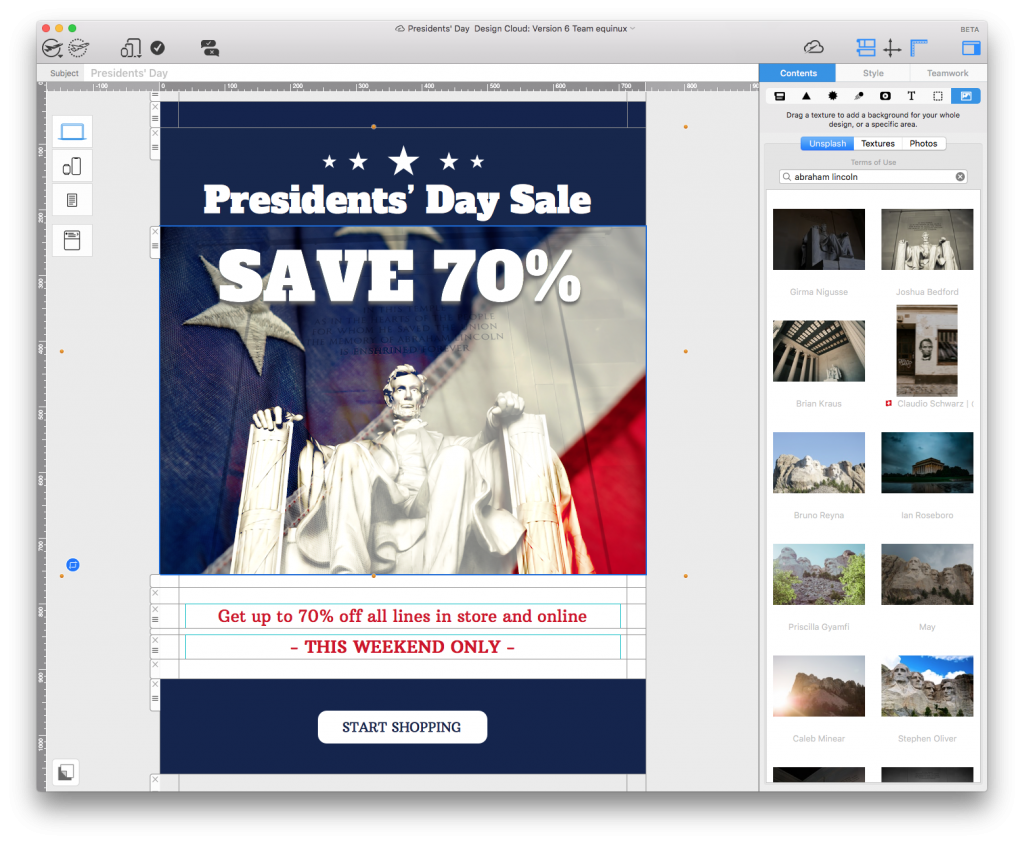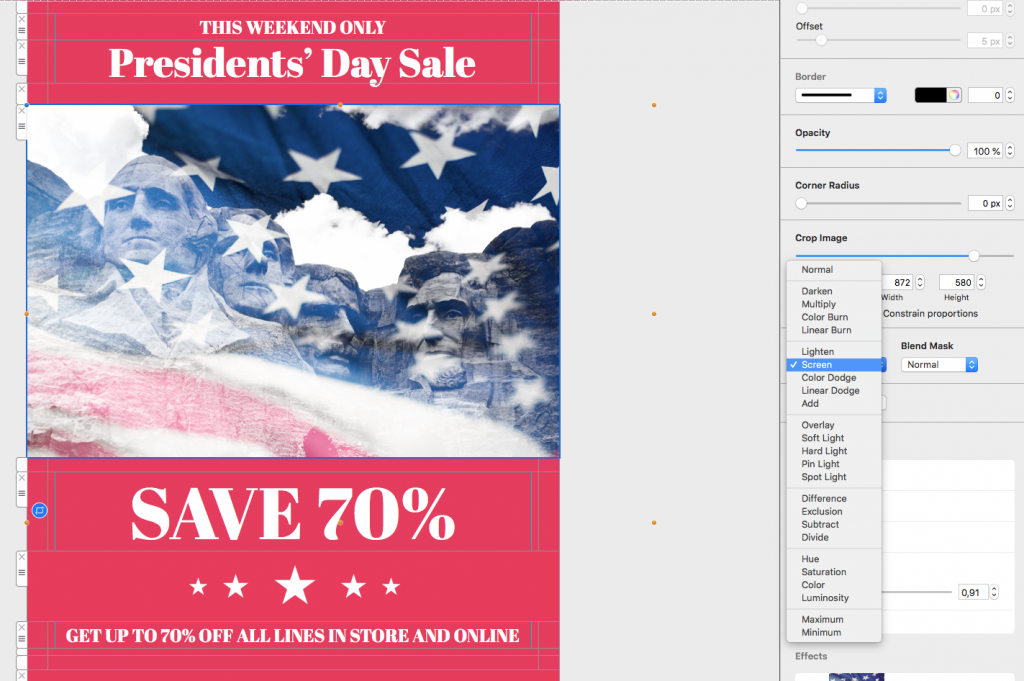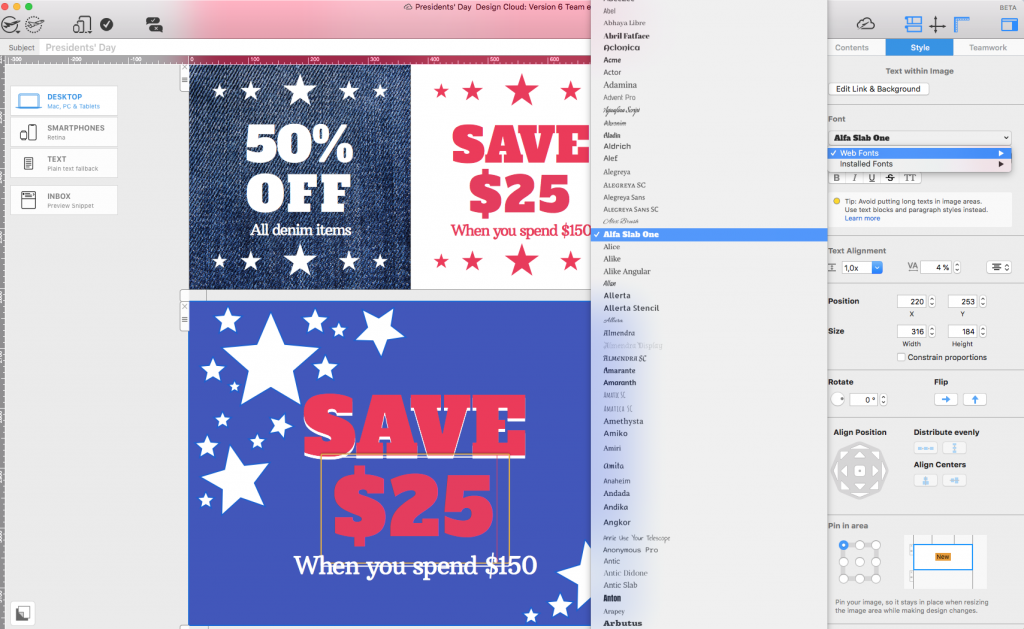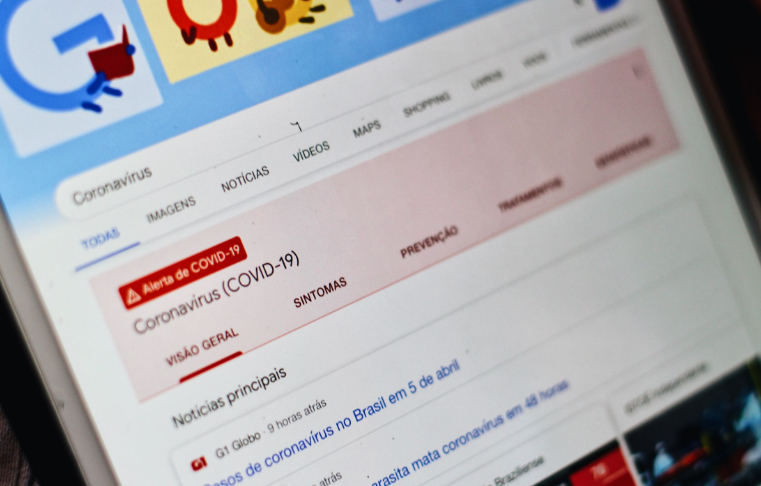
The ongoing coronavirus crisis makes the way you use internal emails to communicate with your team more important than ever. As well as providing colleagues with much needed support and guidance during these difficult times, it's also critical that you're able to keep spirits up and continue encouraging productive work.
As businesses all over the world are facing new working environments and constantly changing safety guidelines, your internal communication channels need to be effective. Here are some key pointers on sending internal emails to keep your team motivated and reassured during the coronavirus crisis.
Tips on Internal Emails During the Coronavirus Crisis
Create clear guidelines and reenforce them
Right now, the emphasis on health and safety is critical. Any business operating during these times will have safety guidelines in place to ensure the wellbeing of staff and customers alike.
Of course, as the situation changes, your safety guidelines will also need to be adjusted accordingly. Use your internal newsletter to let your staff know about the guidelines you have put in place and continue to reenforce these in every newsletter to emphasise their importance.
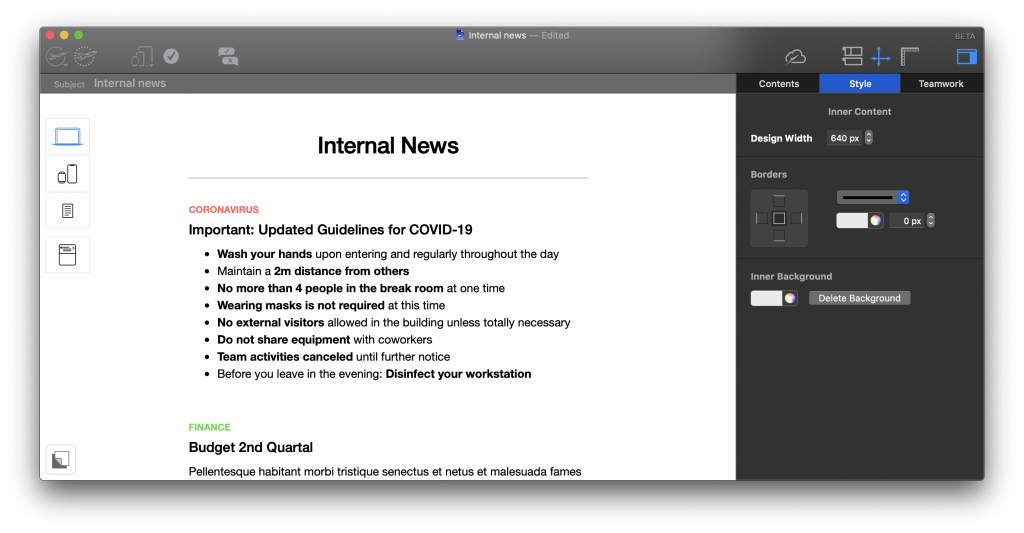
List and reenforce your business's key guidelines in each internal email newsletter.
If anything changes (e.g. mandatory face masks, new rules for lunch breaks, etc.), your internal newsletter should be the first place you communicate this. This helps prevent false information from spreading and keeps everyone on the same page.
Make sure communication is regular
When it comes to internal newsletters during the coronavirus crisis, consistency is key.
Compiling all of the most important information into a weekly or bi-monthly internal newsletter helps everyone stay up-to-date with the latest guidelines and shows your coworkers that you are committed to keeping up the channel of communication.
Sticking to a clear sending schedule also helps your staff know when to expect a newsletter and makes it less likely that important emails will go unread.
Use a clear layout to present key information
How your internal newsletter looks is just as important as what's inside it. If your newsletter layout is a mess, your colleagues will struggle to take in the information effectively and may not even finish reading.
As well as a healthy balance of text and images, you should also divide your email up into clear and concise sections with bold headlines. This helps anyone skim reading get to the most important information and also makes the whole thing much easier to read and process.
Tip: Lots of information to cover? Try using a different color for coronavirus updates. This will help coworkers in a rush to identify this information faster.
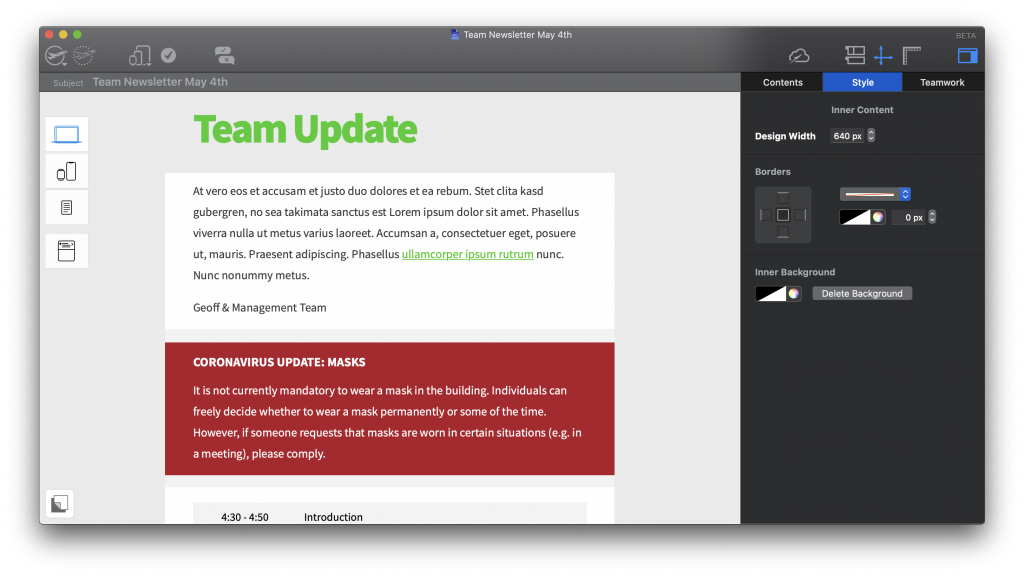
Using a different color (e.g. red) for coronavirus updates helps your team identify this information faster.
Be reactive and keep up to date with current news
The situation is changing rapidly every day and most of us find ourselves frequently checking up on the latest coronavirus news. Whilst doing this, it's also human nature to question how the latest developments will affect us.
To avoid confusion and speculation amongst colleagues, use your internal newsletter to react to any news that you know will directly impact your business. Some current examples could include:
- Sick pay
- Furlough leave
- Work from home regulations
- Mandatory masks in public spaces

Inform your colleagues about mask regulations or other important developments which could impact them.
The faster you react to this type of news and put a statement together for staff, the more reassured they will feel.
Use a survey to find out how coworkers are feeling
It's not just external news you should be responding to, but also the general feeling within your team. This is a worrying time for everyone and your colleagues will no doubt have a large amount of questions and concerns which they may want to air.
Use your internal emails to grant your colleagues the chance to tell you how they are feeling in regards to the coronavirus. One great way of facilitating this is via an online survey platform such as Google Forms or Survey Monkey.
Creating an anonymous team survey helps you get a general idea of how your team is feeling so that you can address their issues or problems directly. Anonymity will also encourage colleagues to be more honest without worrying about what others may think.
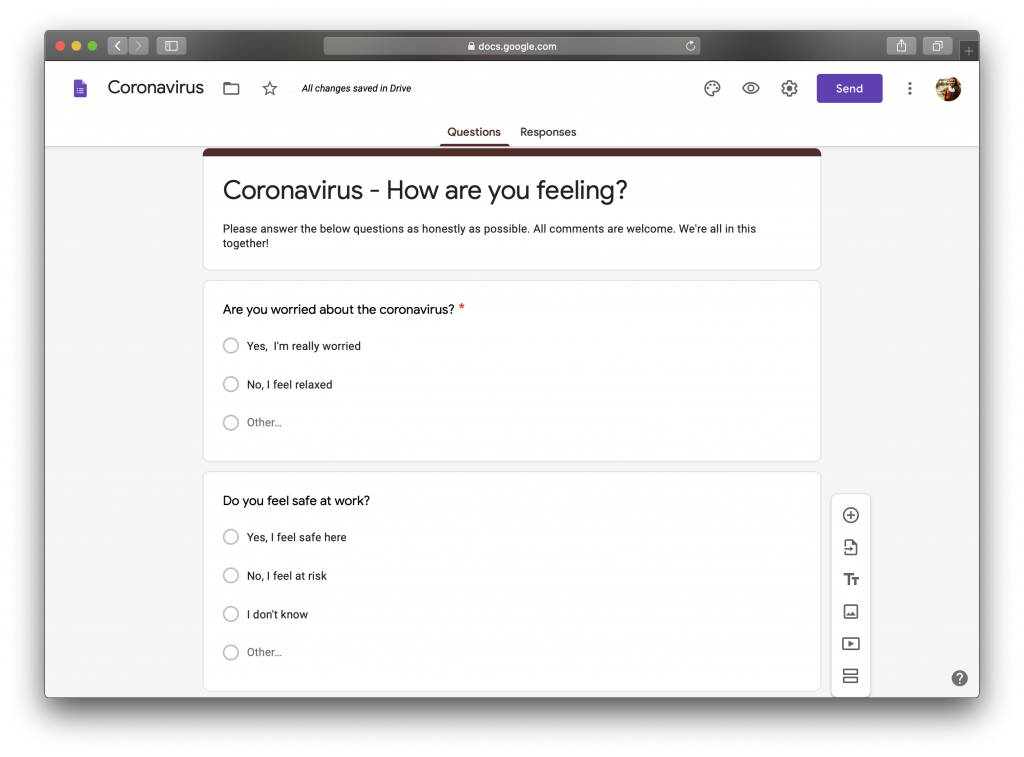
Create a short, anonymous feedback form to find out how your staff are feeling.
Tip: If possible, sharing the anonymous results of the survey in the next newsletter may also help reassure team members that they are not alone in their concerns.
Point out helpful resources
Take advantage of your internal emails and use this communication channel as a way to also share useful resources with your team.
This could be anything from official government resources, to an inspiring blog post, or just handy life hacks to help them get through the crisis. Your team will be bound to appreciate this kind of information.
Most importantly, you also need to let your coworkers know that help is available if they need it. Make sure to point out any relevant support systems your company has in place should anyone be feeling affected by the situation.
Provide a balanced mix of content
Lastly, in addition to all the serious content surrounding the coronavirus, it is also a good idea for you to include some lighthearted, happier news in your internal emails.
Content such as funny cartoons and memes, GIFs, positive internal announcements (e.g. birthdays, engagements, new babies, etc.), tried & tested recipes, or just general feel-good news stories are all great additions to your internal newsletter that will help keep spirits up within the team.
Creating Internal Newsletters for the Coronavirus Crisis
Internal emails are an essential part of your business's internal communication channels - especially during difficult times. For more general tips on creating an internal newsletter, check out these resources:
How to Create an Interesting Company Newsletter that Your Employees Will Want to Read
Maintaining Your Internal Newsletters - Keep Co-Workers Engaged and Interested in Your Newsletter
Until next time,
Your Mail Designer 365 Team

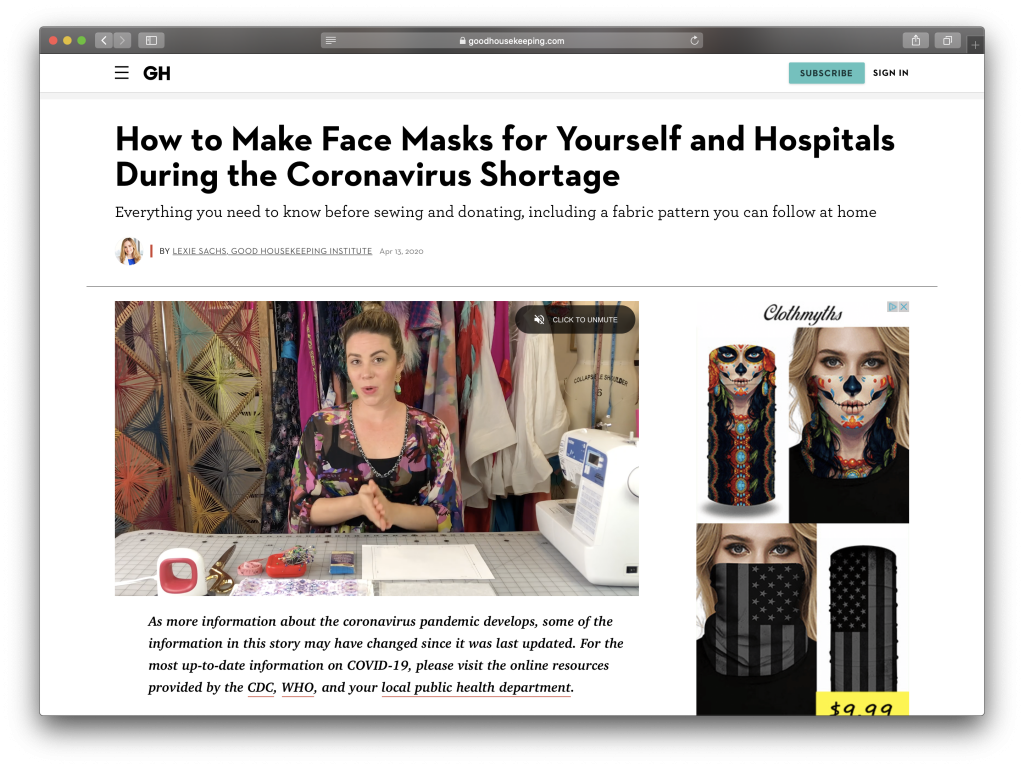




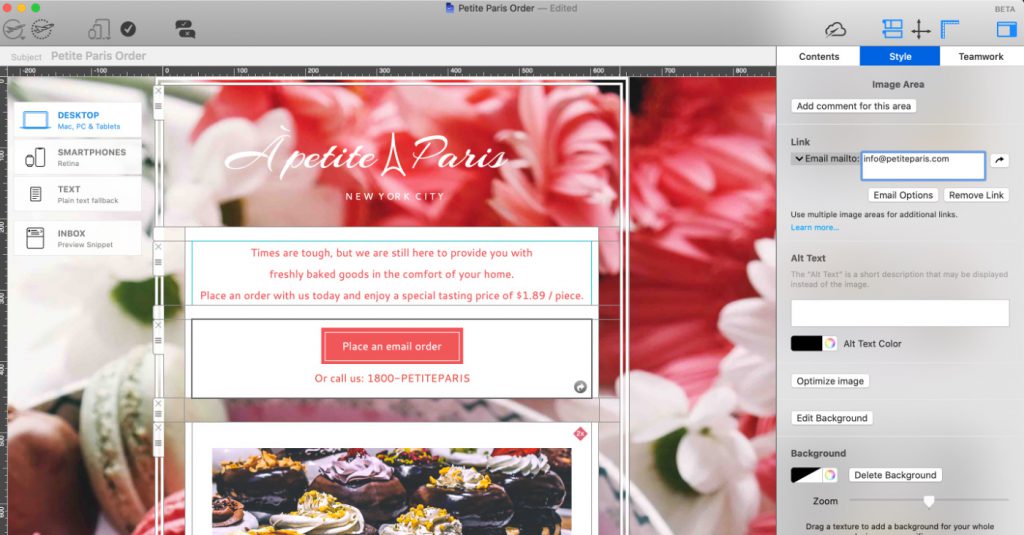
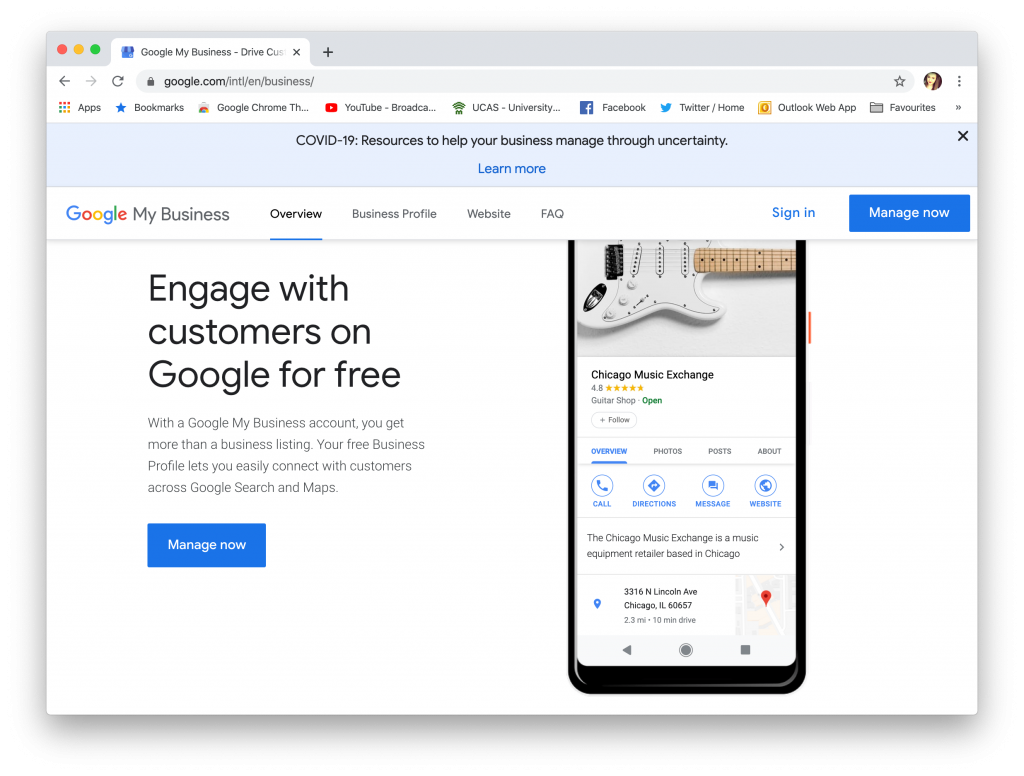
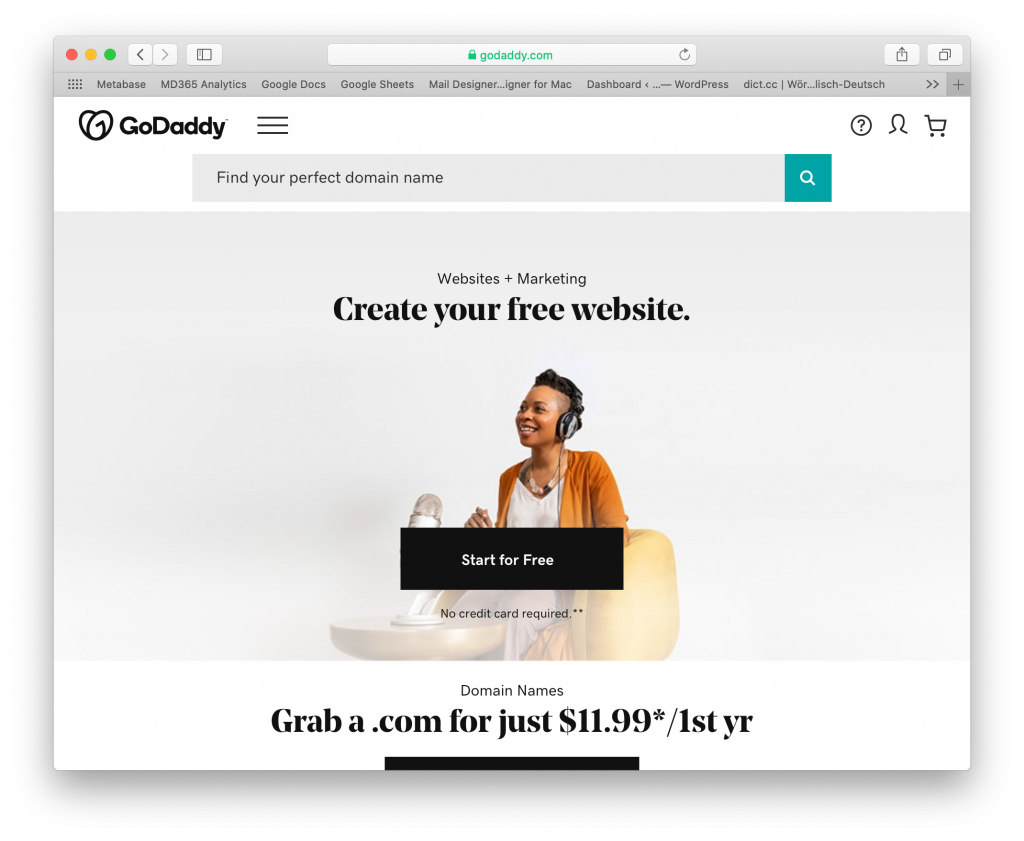
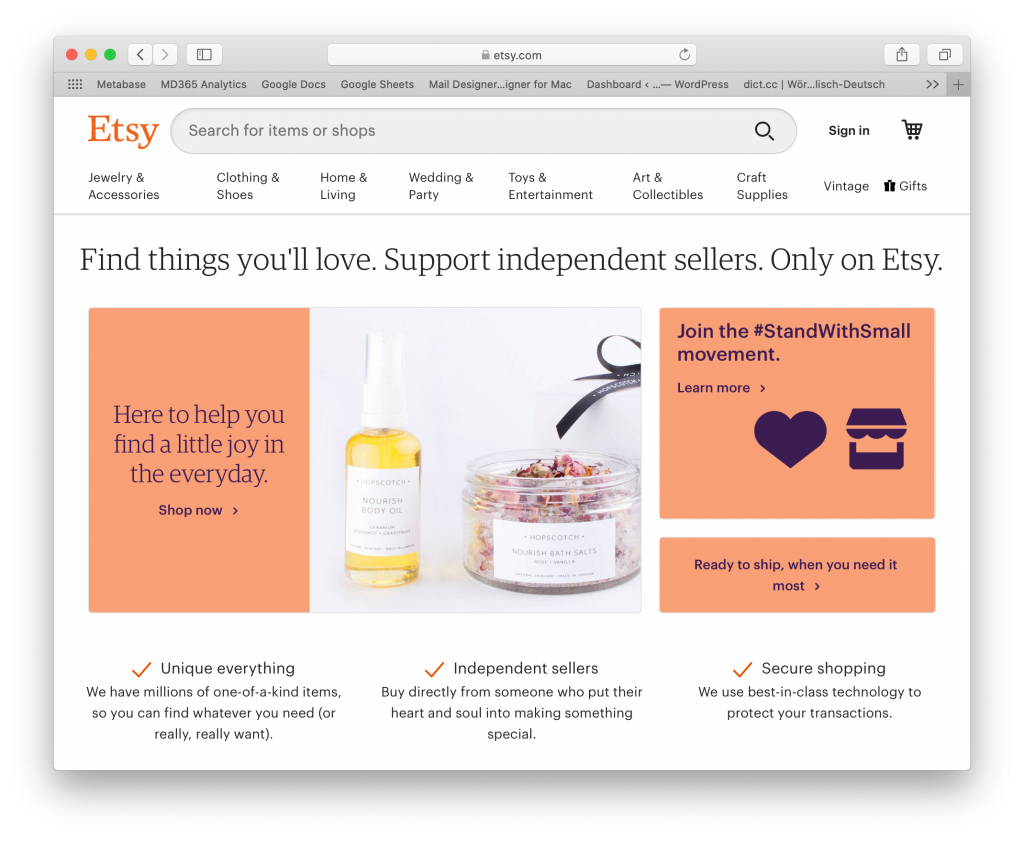
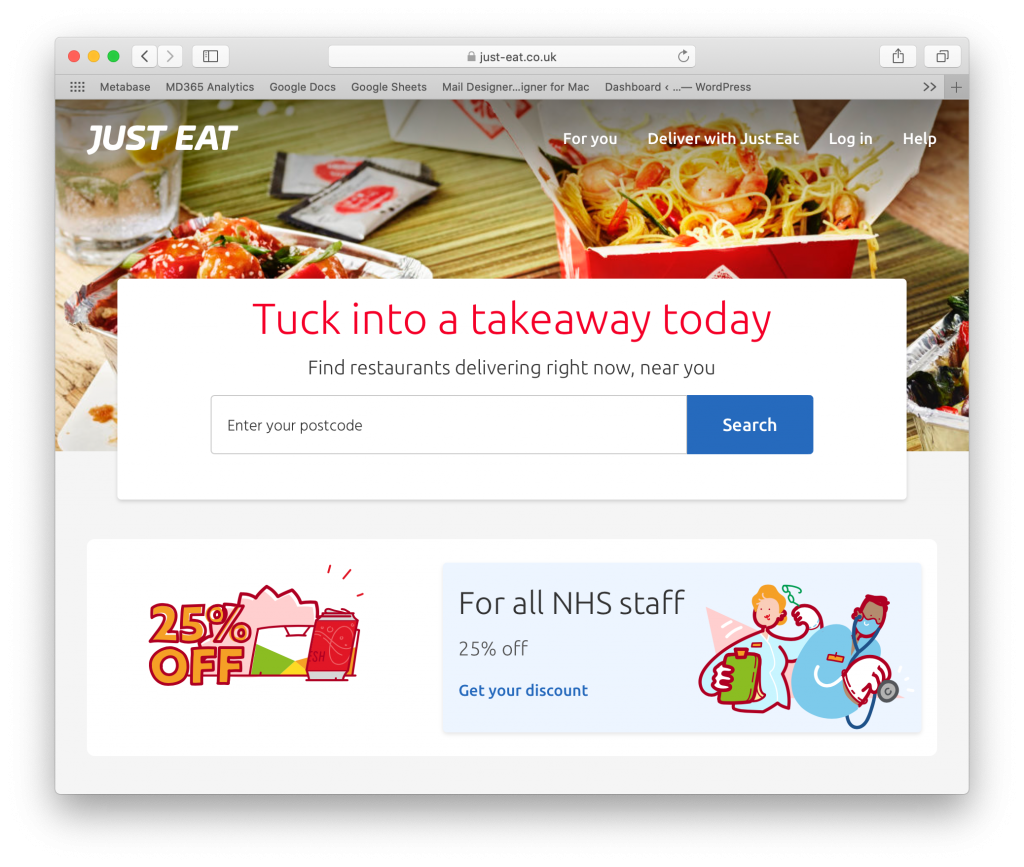

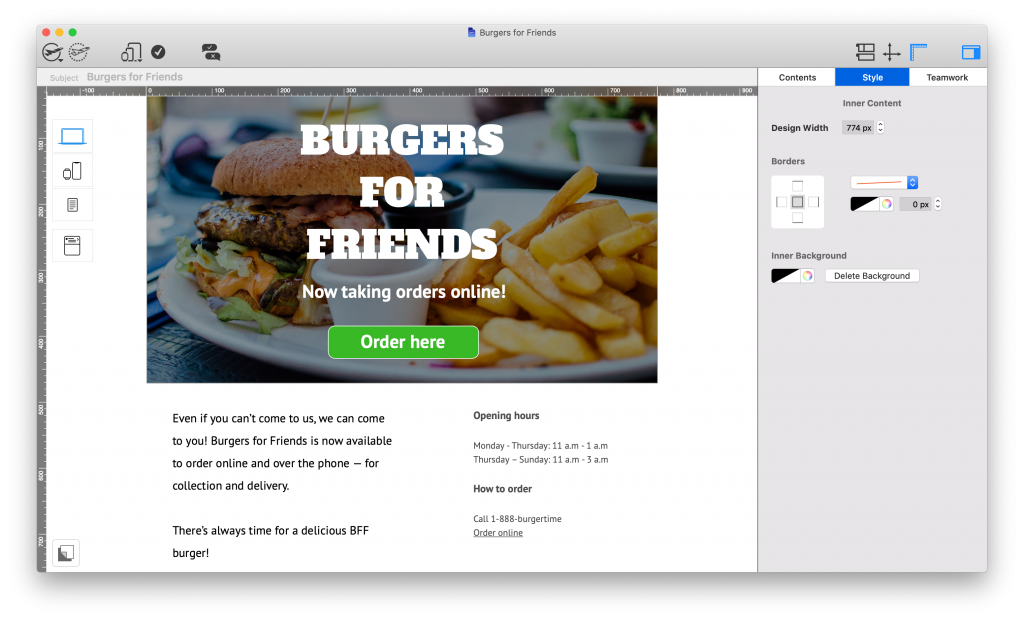 Sign up free today
Sign up free today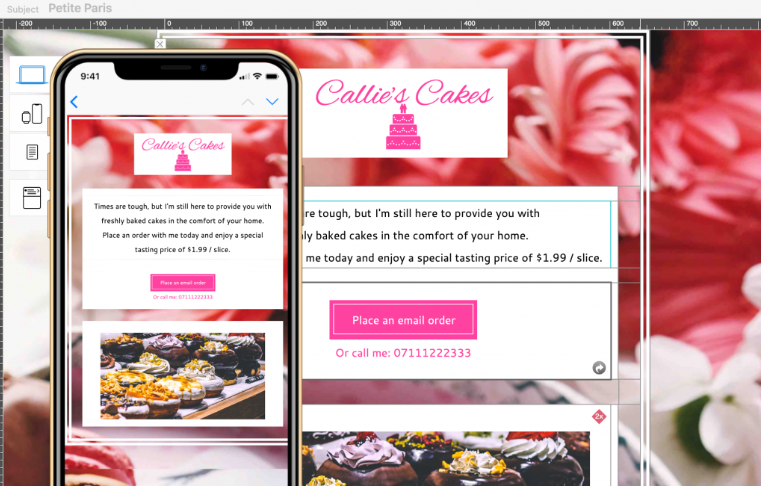
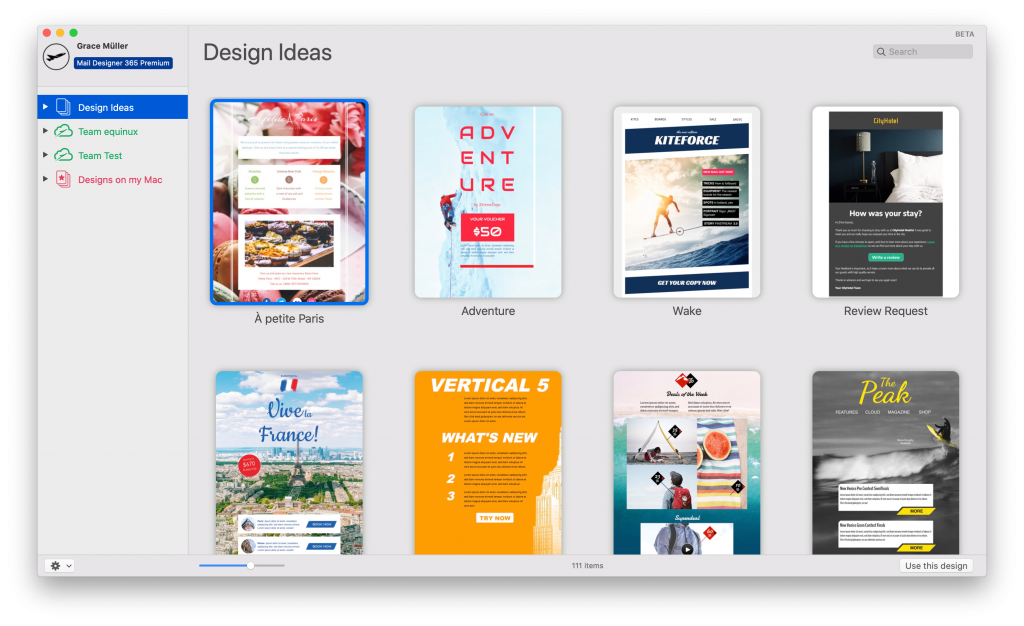
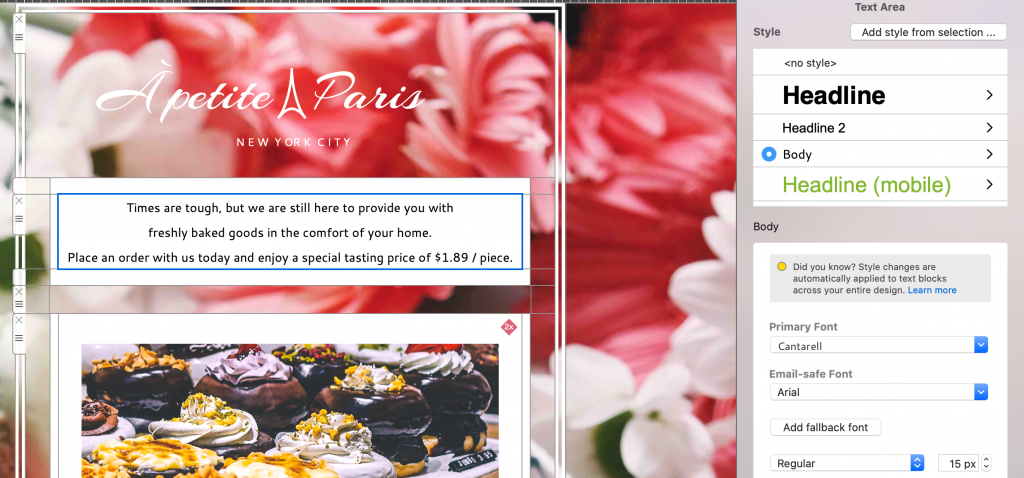
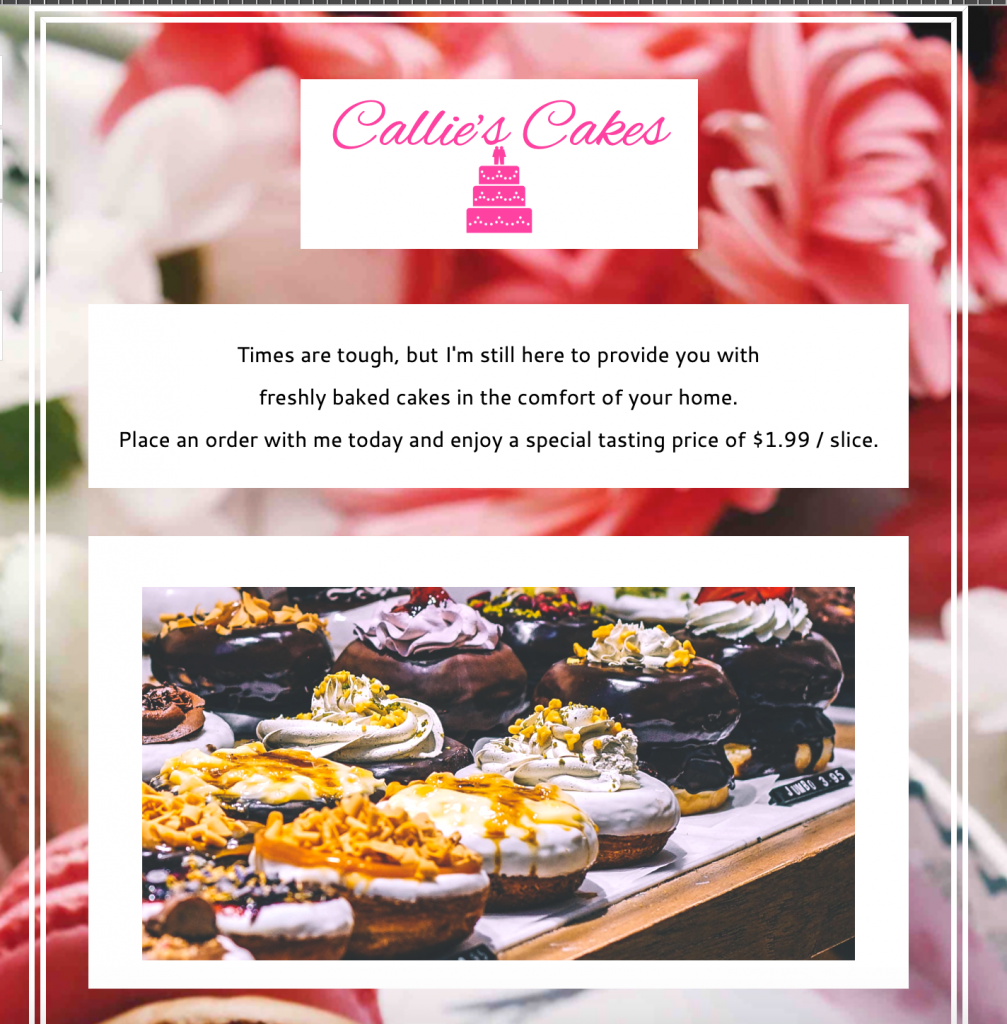
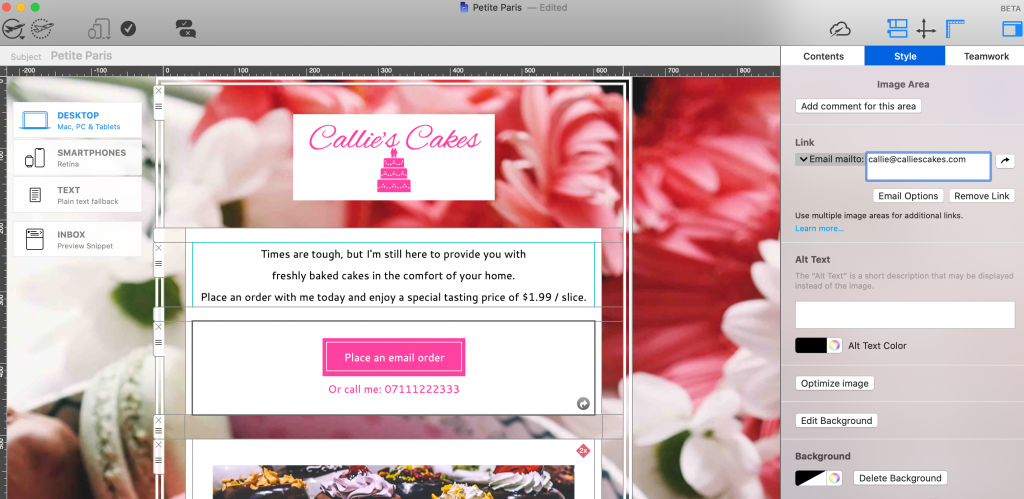
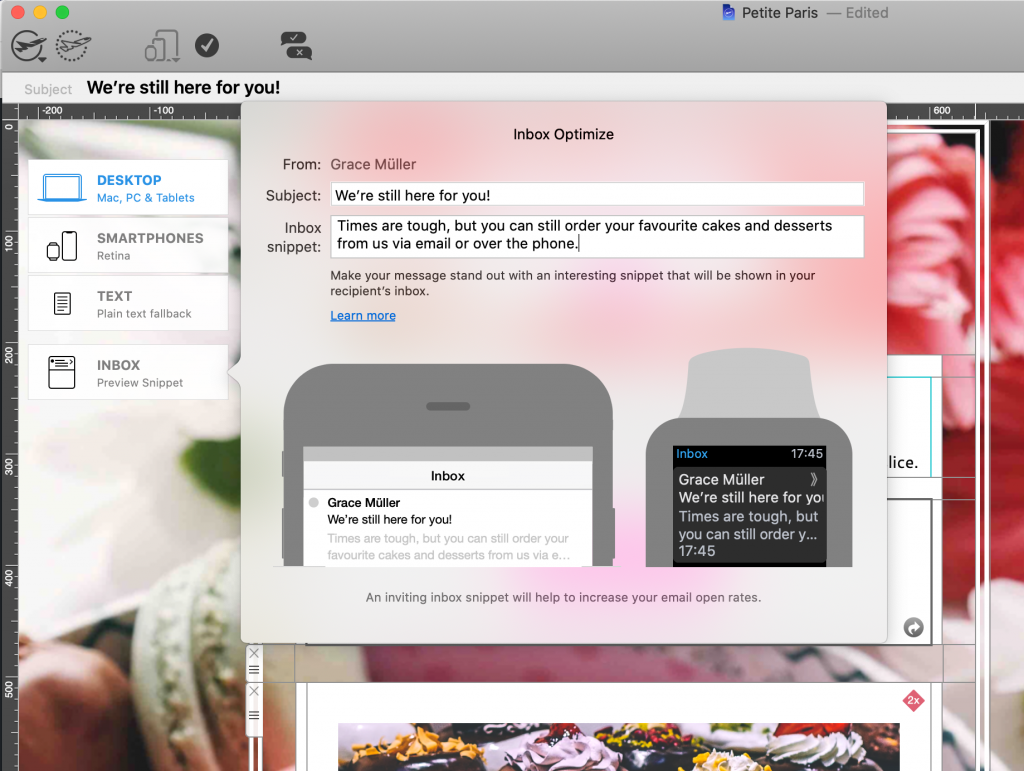
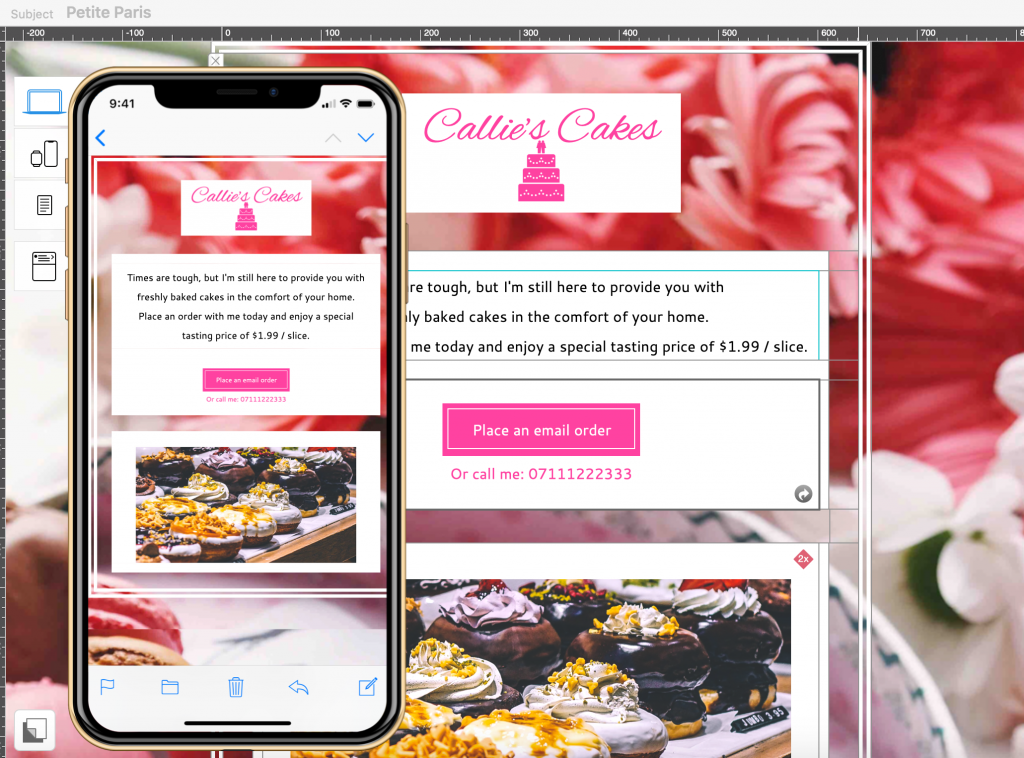
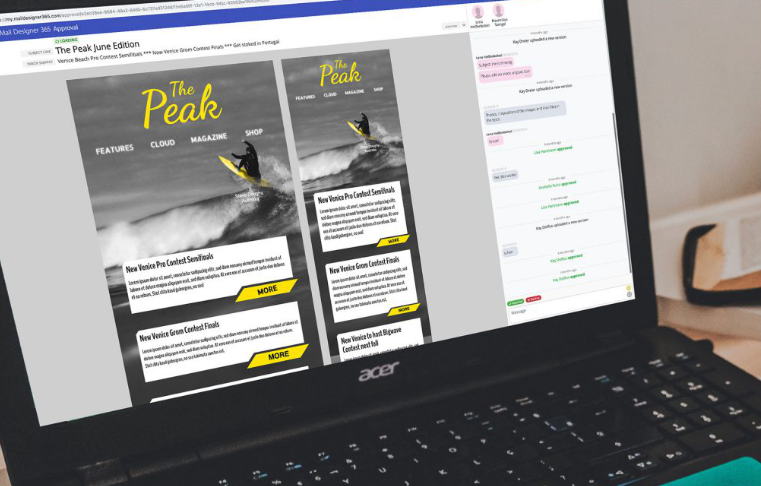

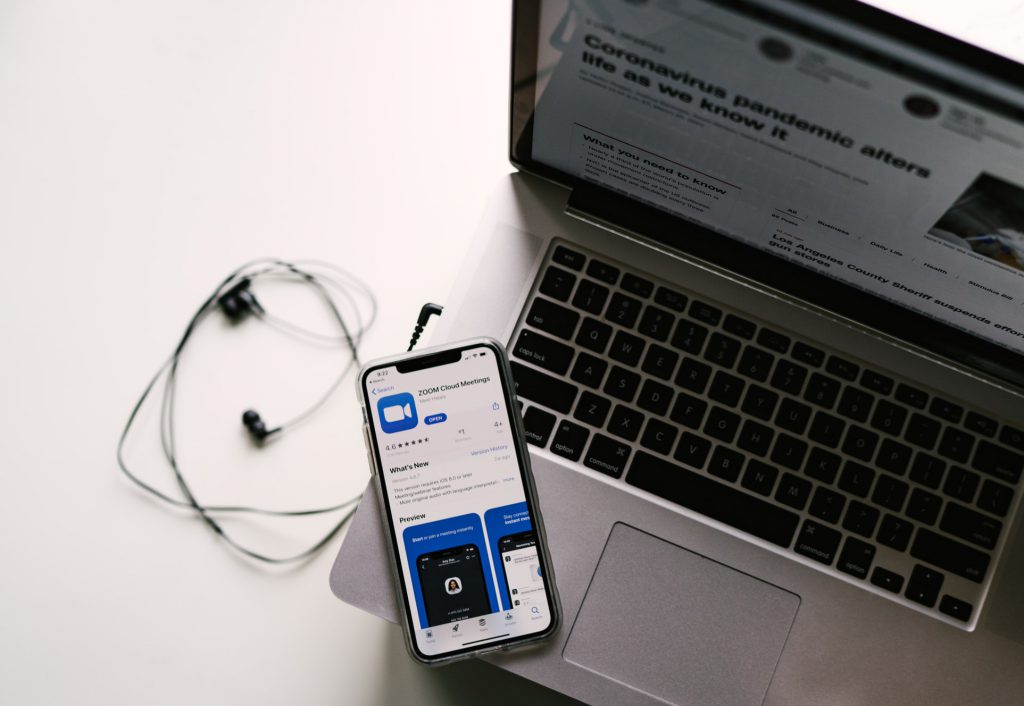



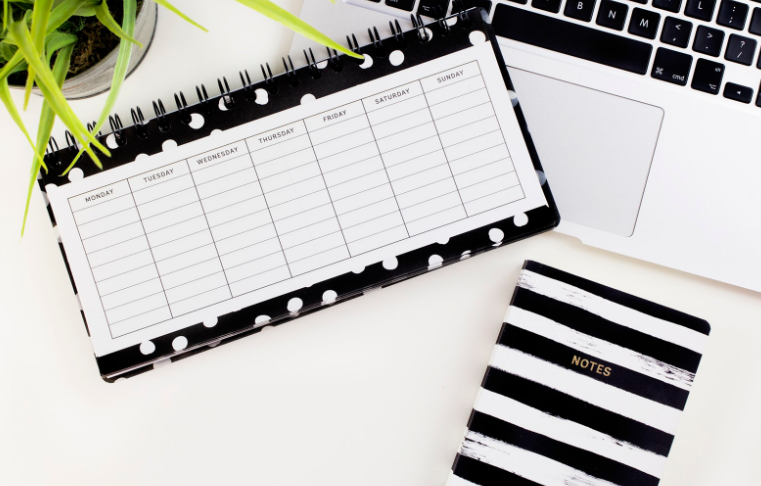
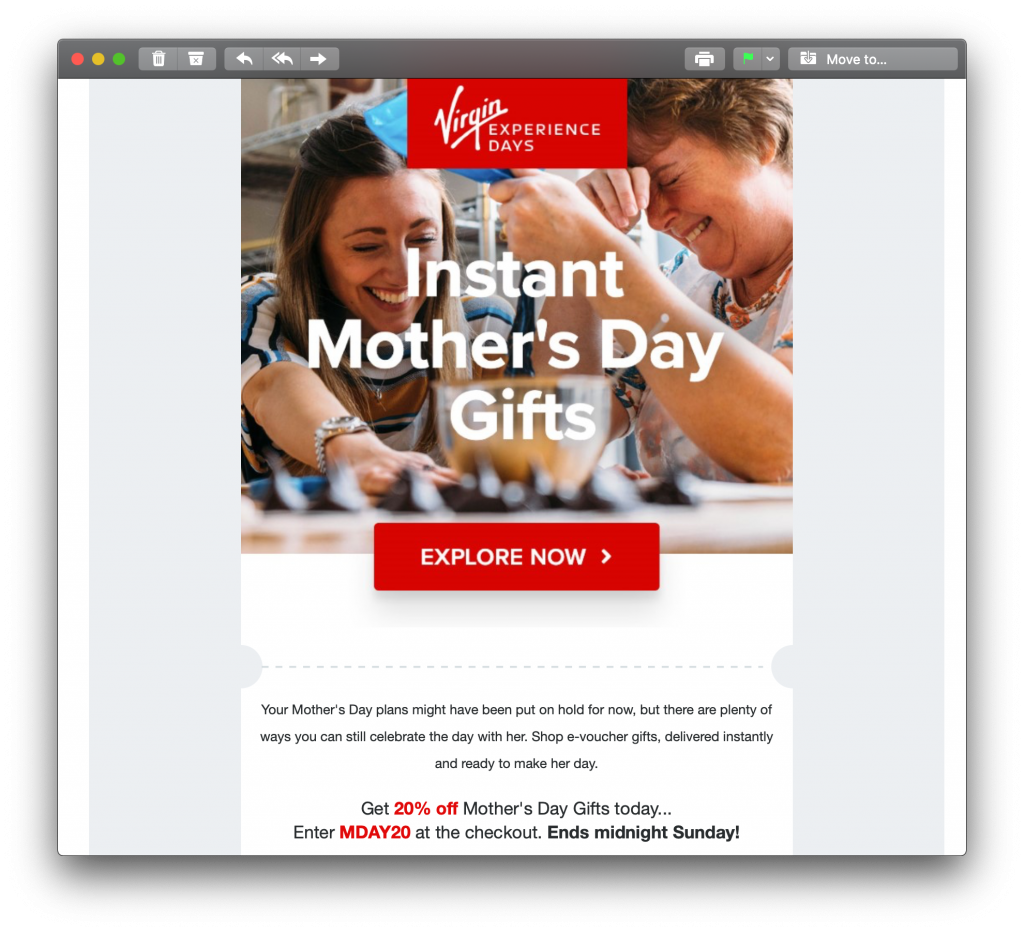
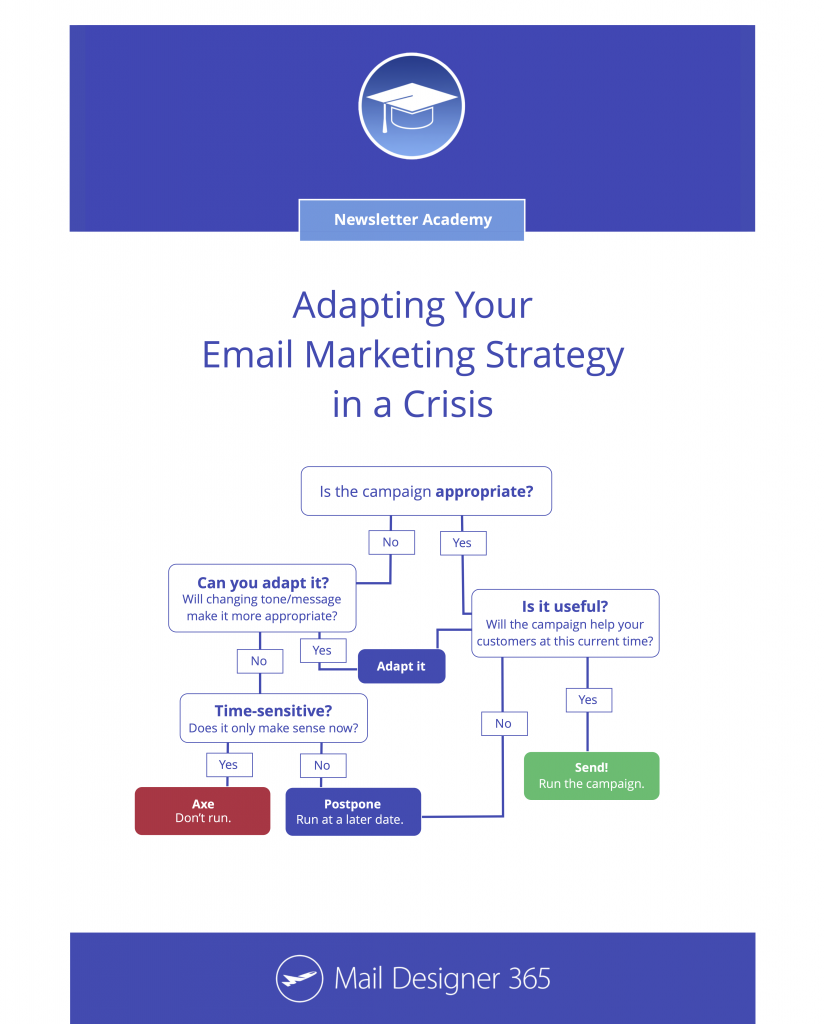
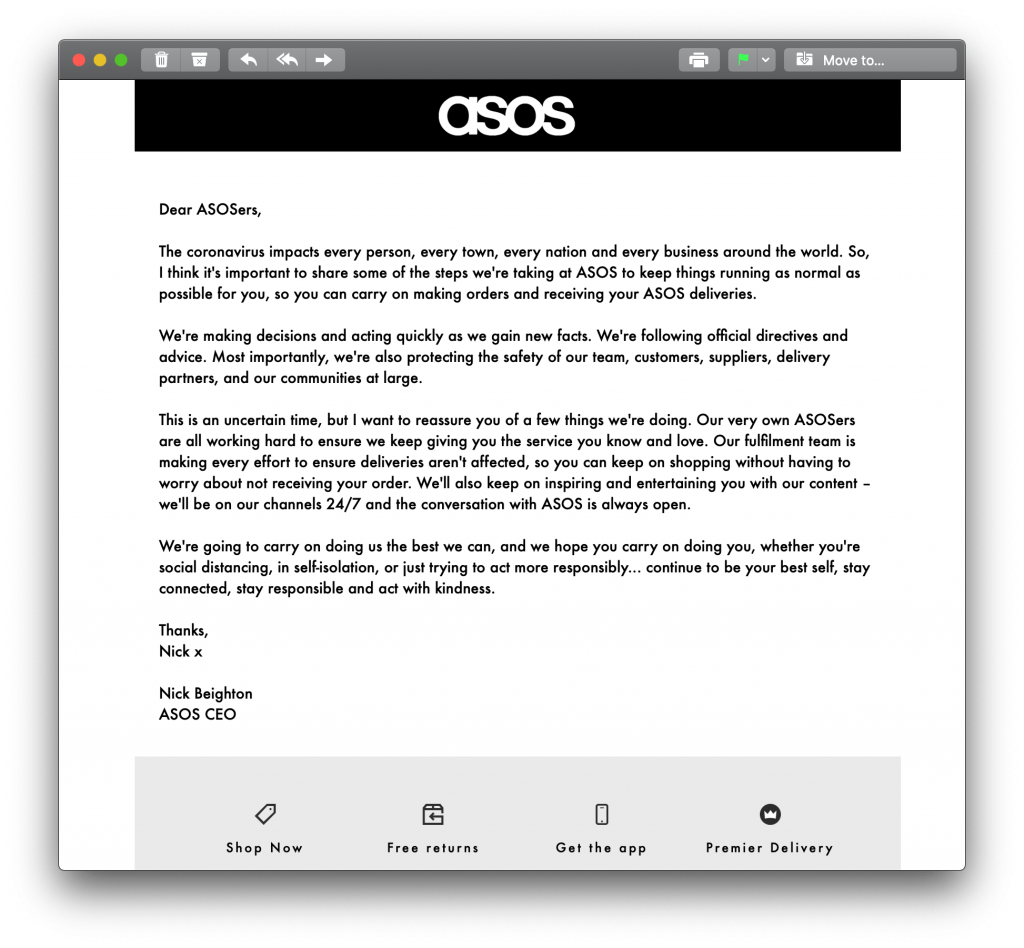 Reebok:
Reebok: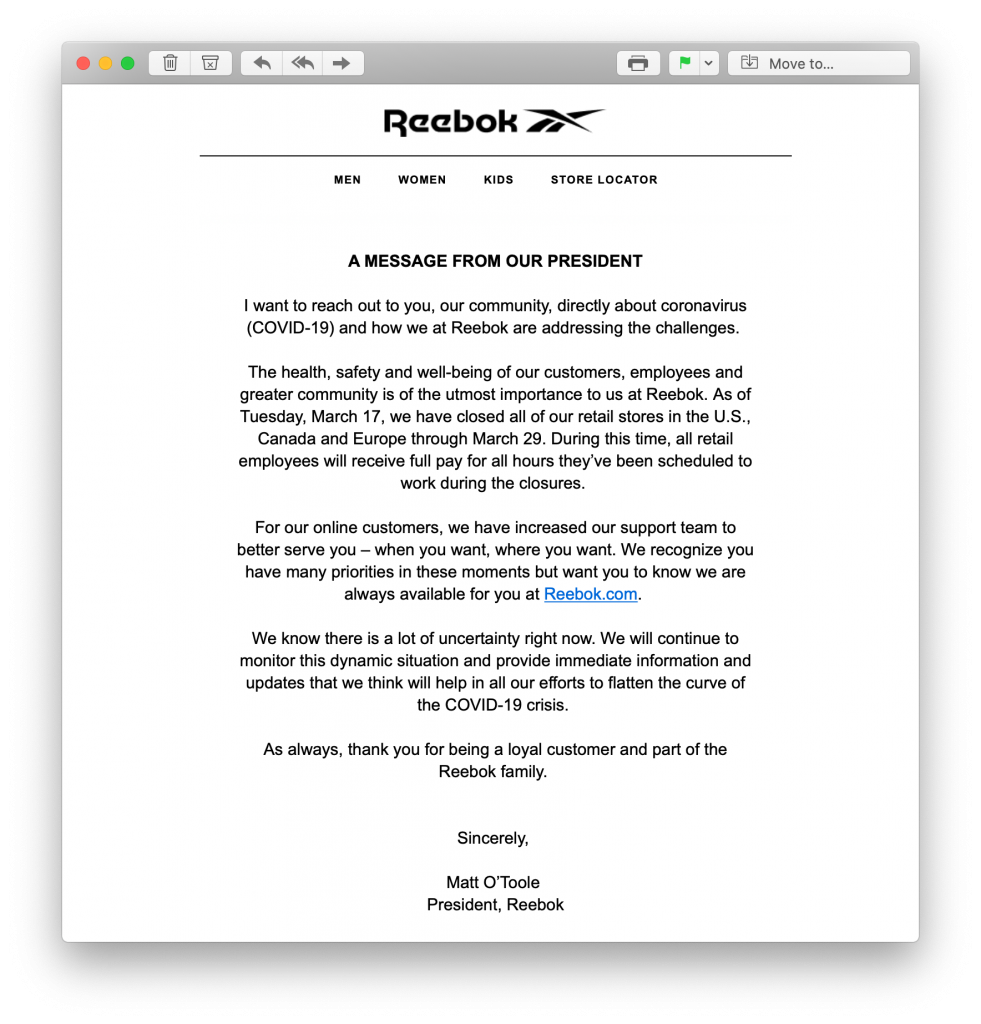
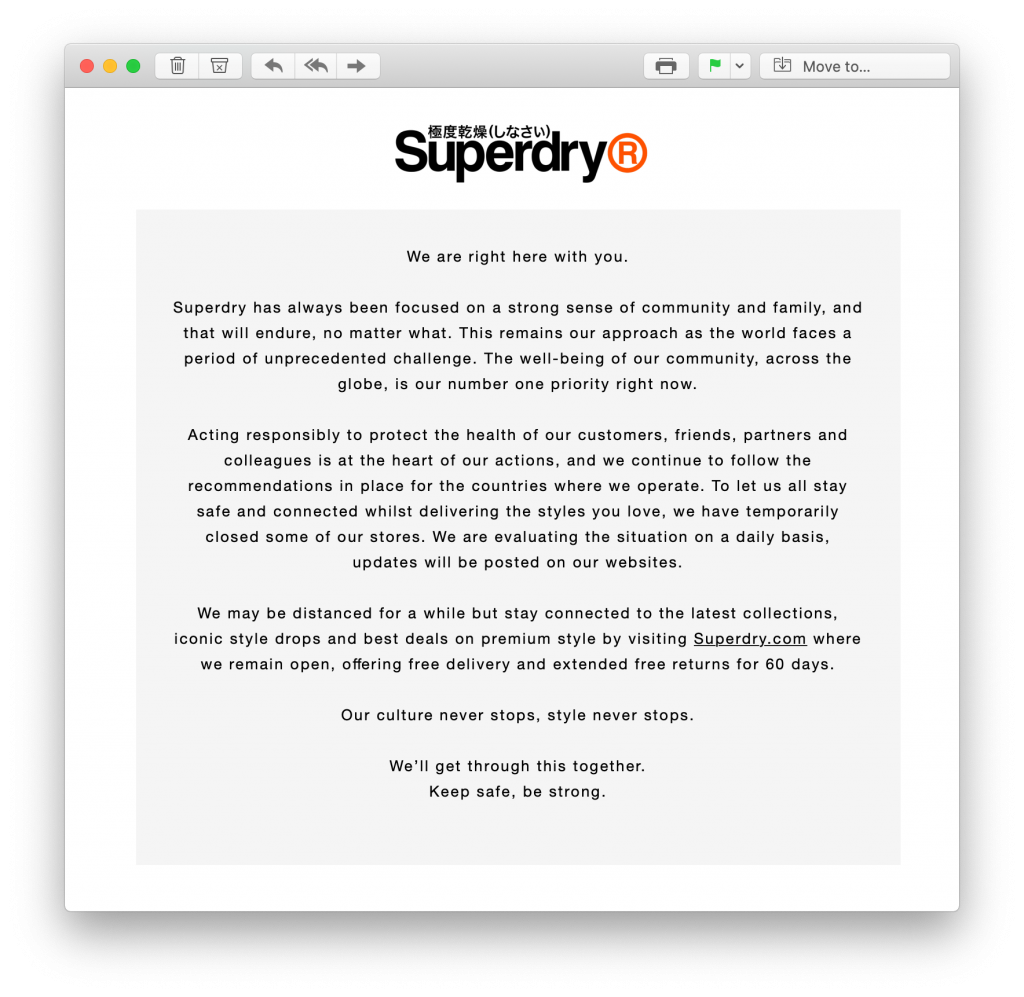
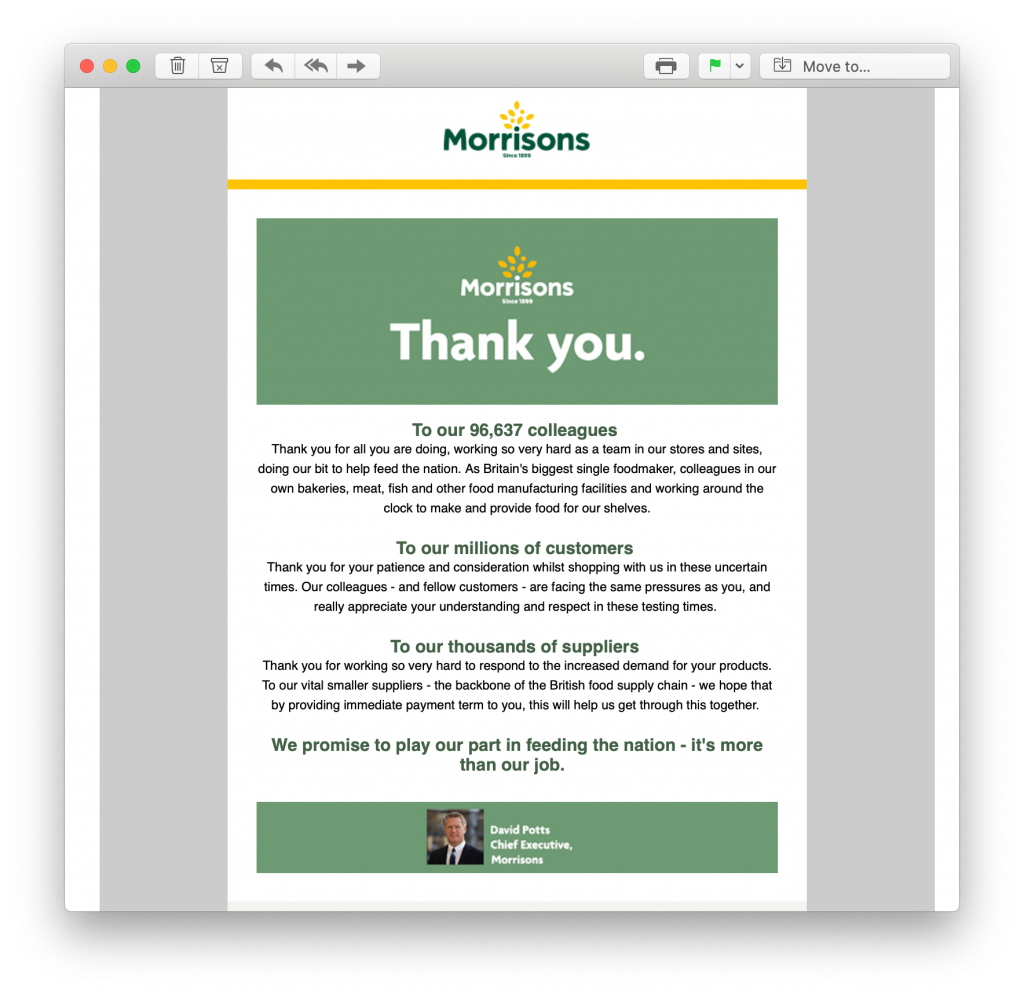
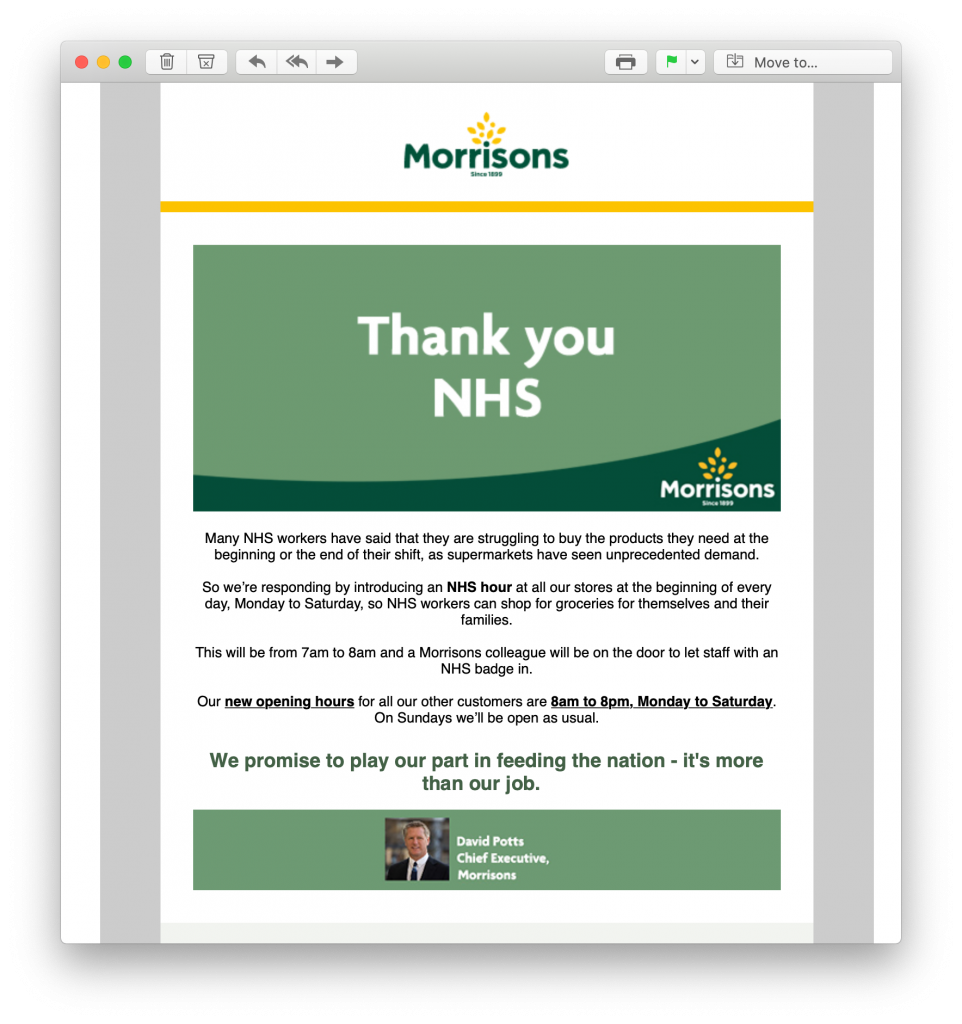
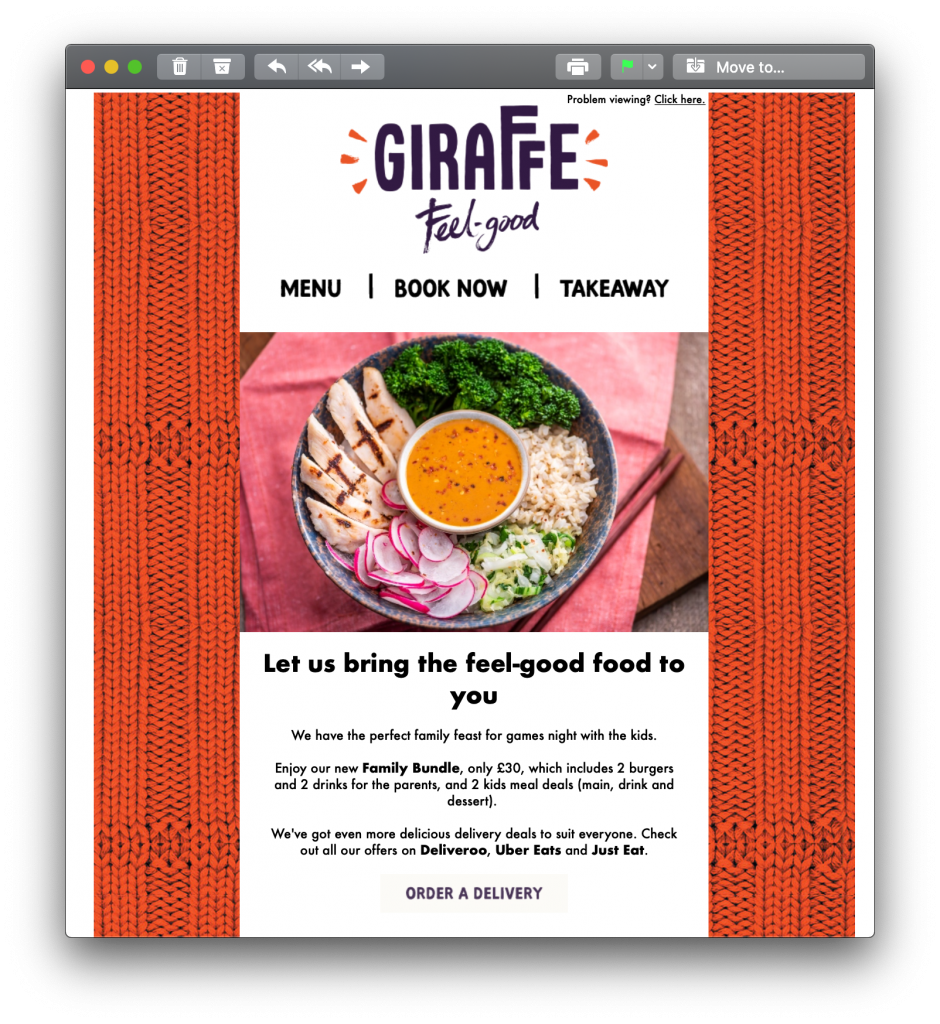
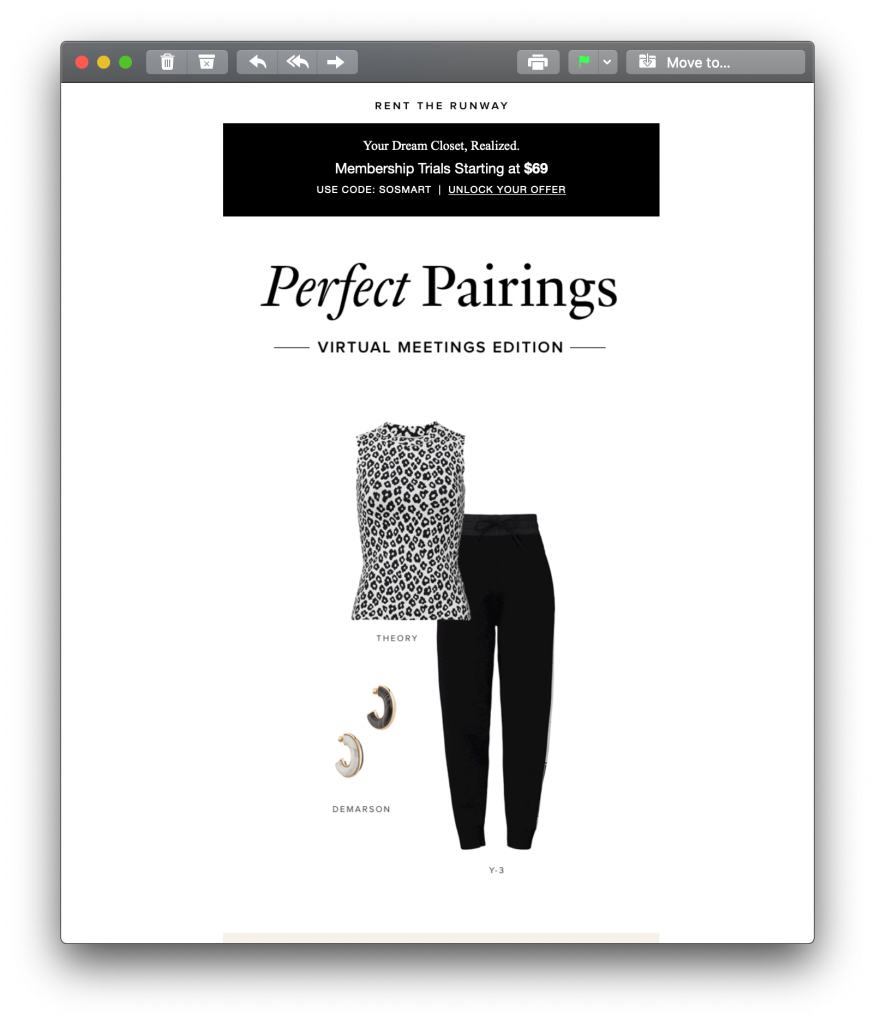
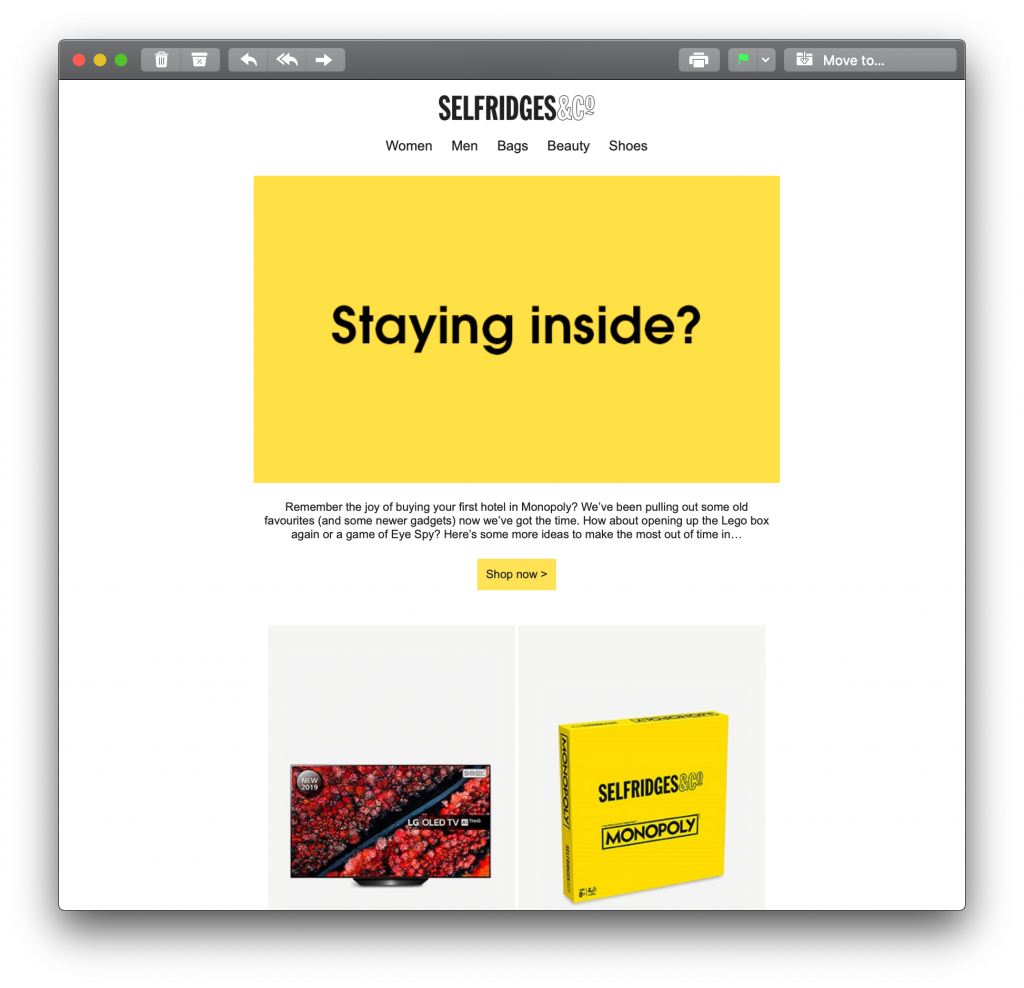
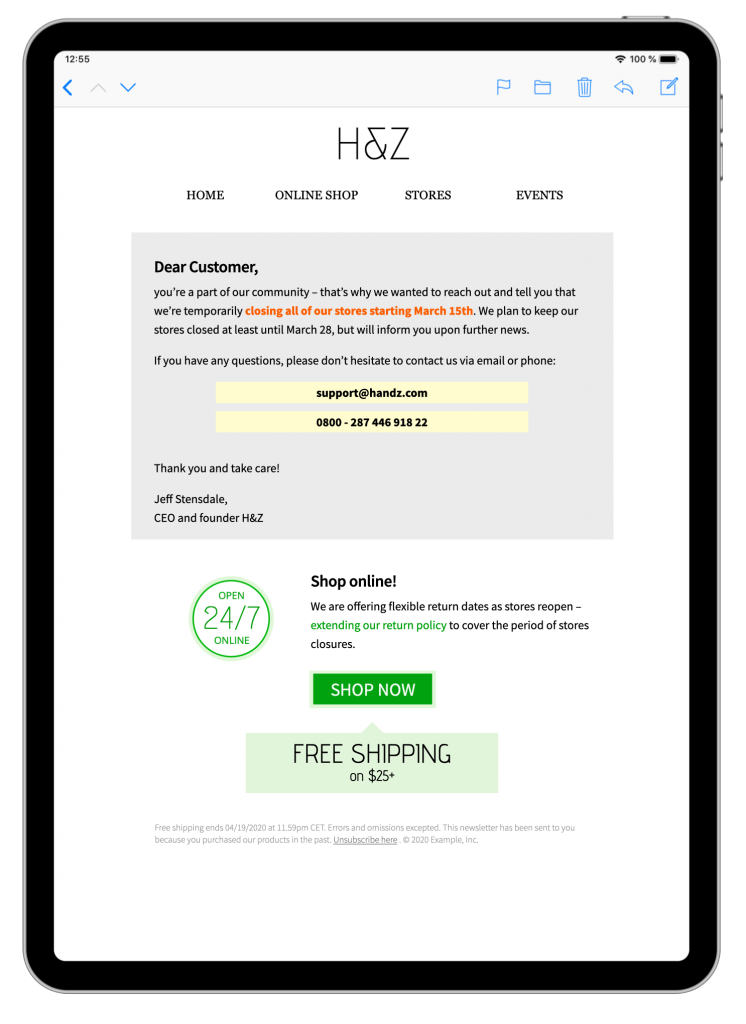
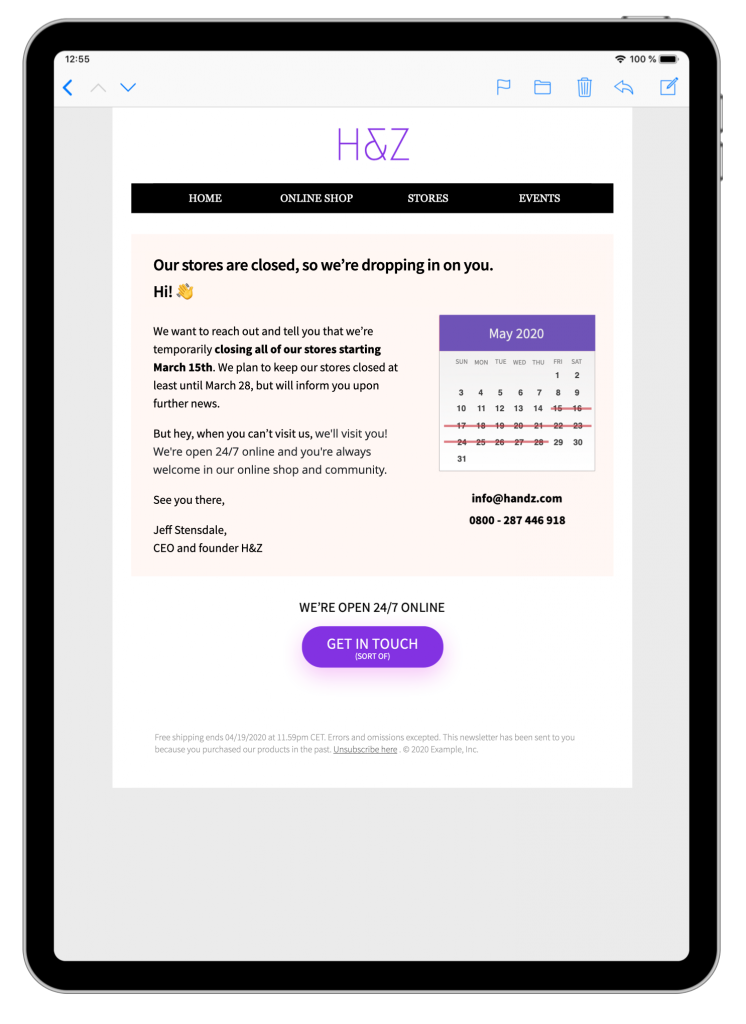
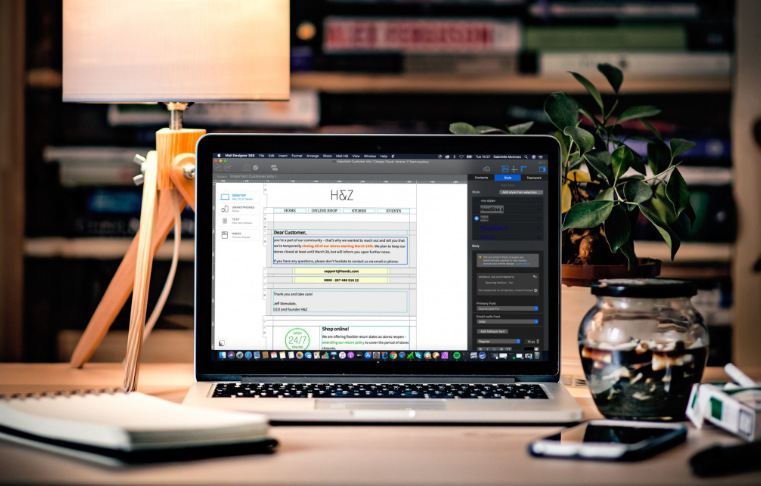
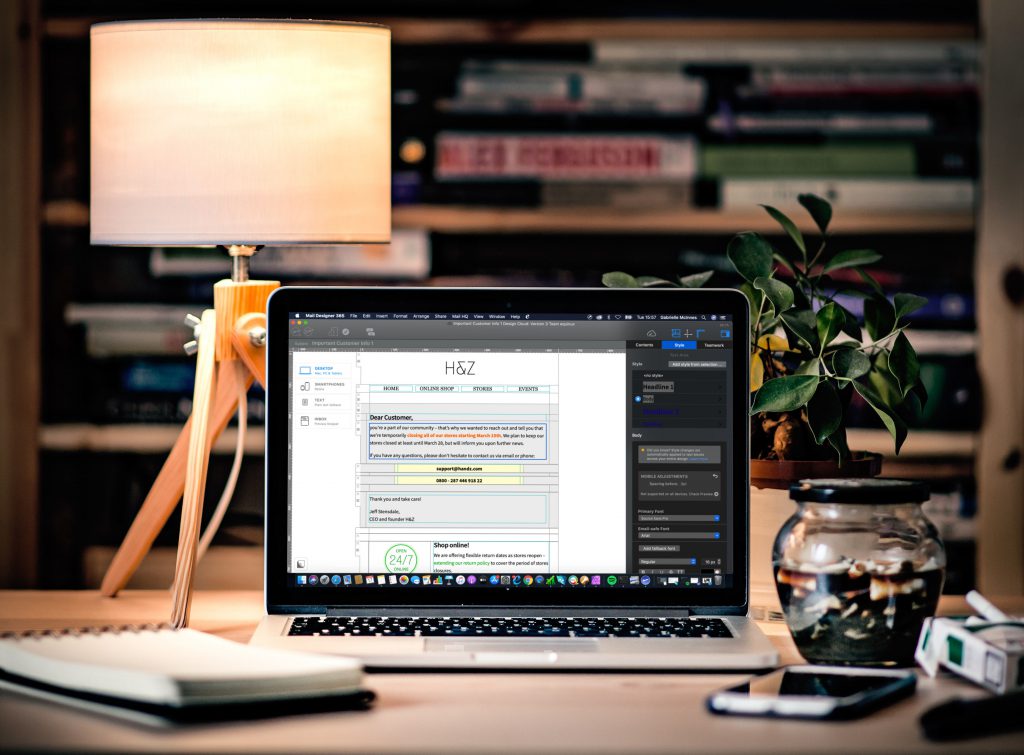

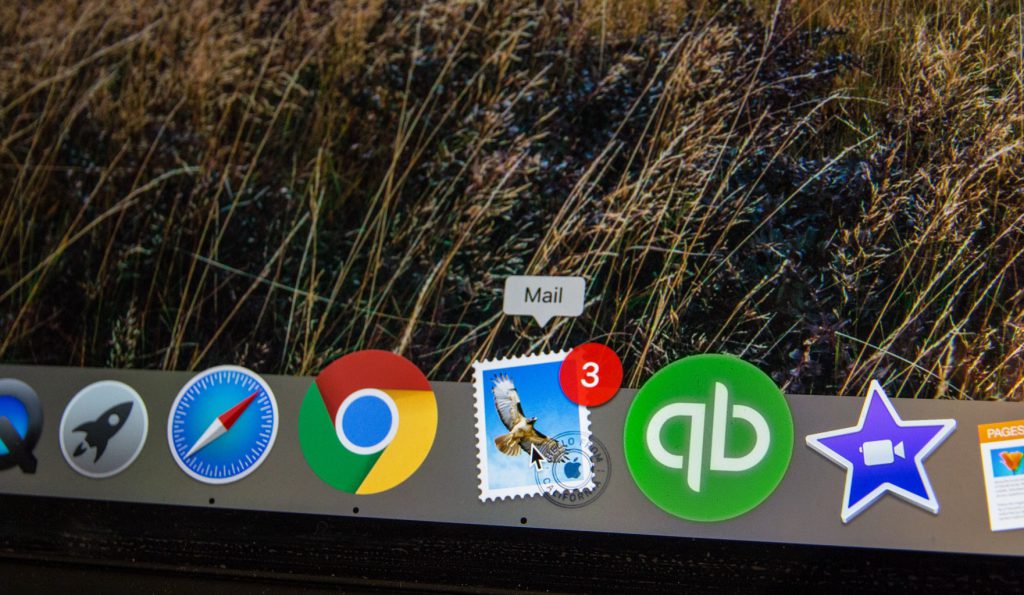
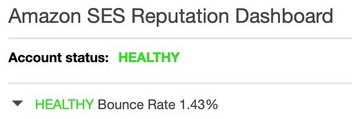 Amazon Web Services deem a bounce rate under 5% as healthy and over 10% as a significant risk.
Amazon Web Services deem a bounce rate under 5% as healthy and over 10% as a significant risk.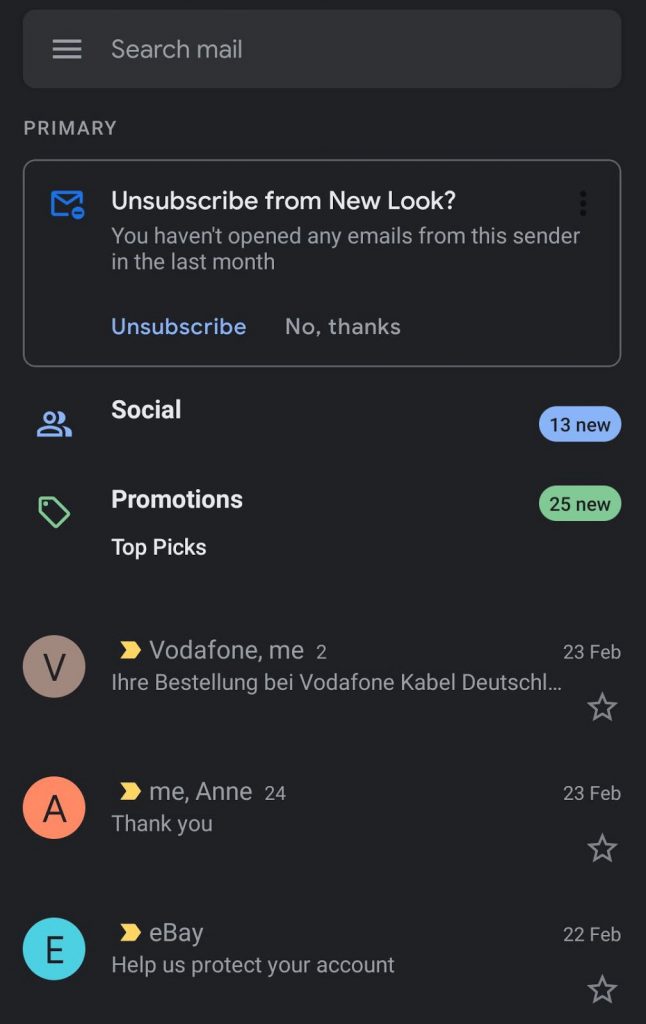

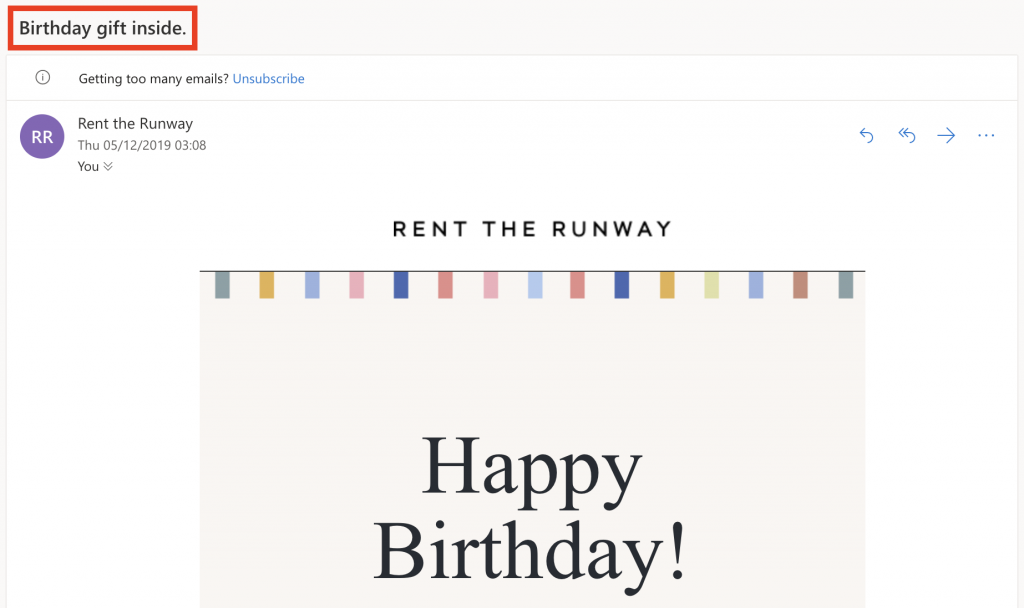
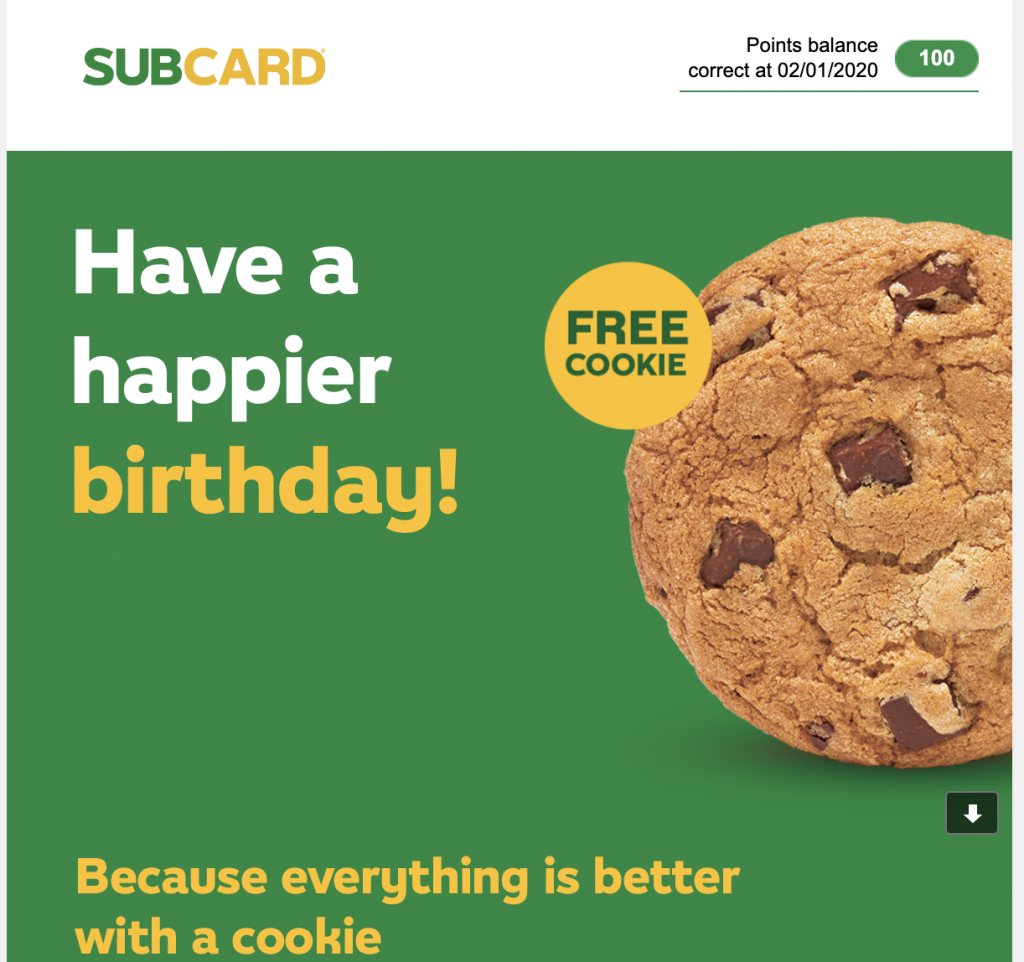
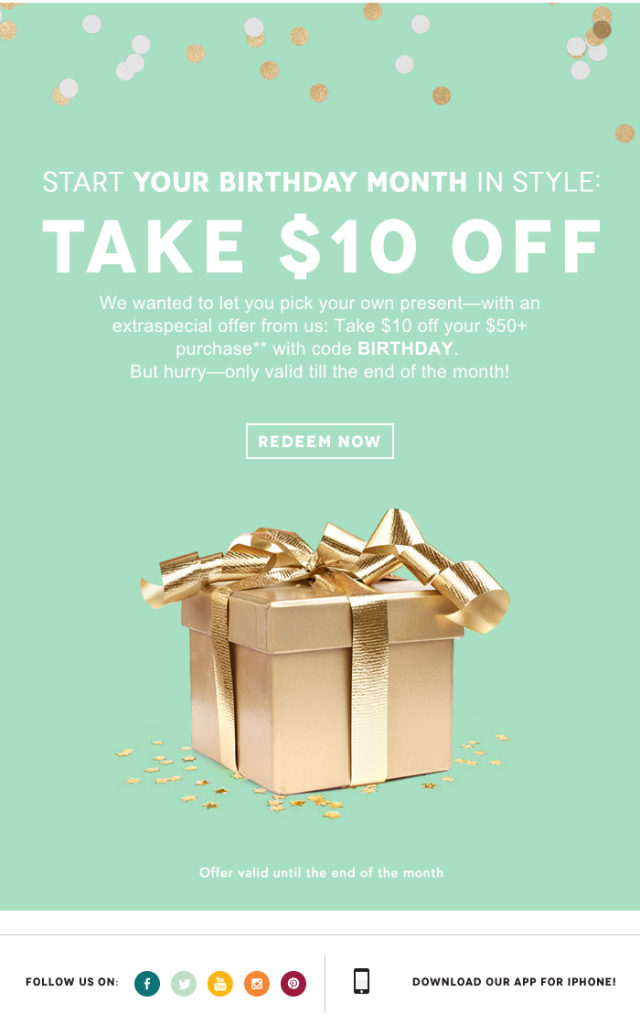 Birchbox turn heads with this fun, pastel green design. The gold gift box and confetti add excitement, and the choice of a big, bold, centred font for the special offer helps hook in the reader straight away.
Birchbox turn heads with this fun, pastel green design. The gold gift box and confetti add excitement, and the choice of a big, bold, centred font for the special offer helps hook in the reader straight away.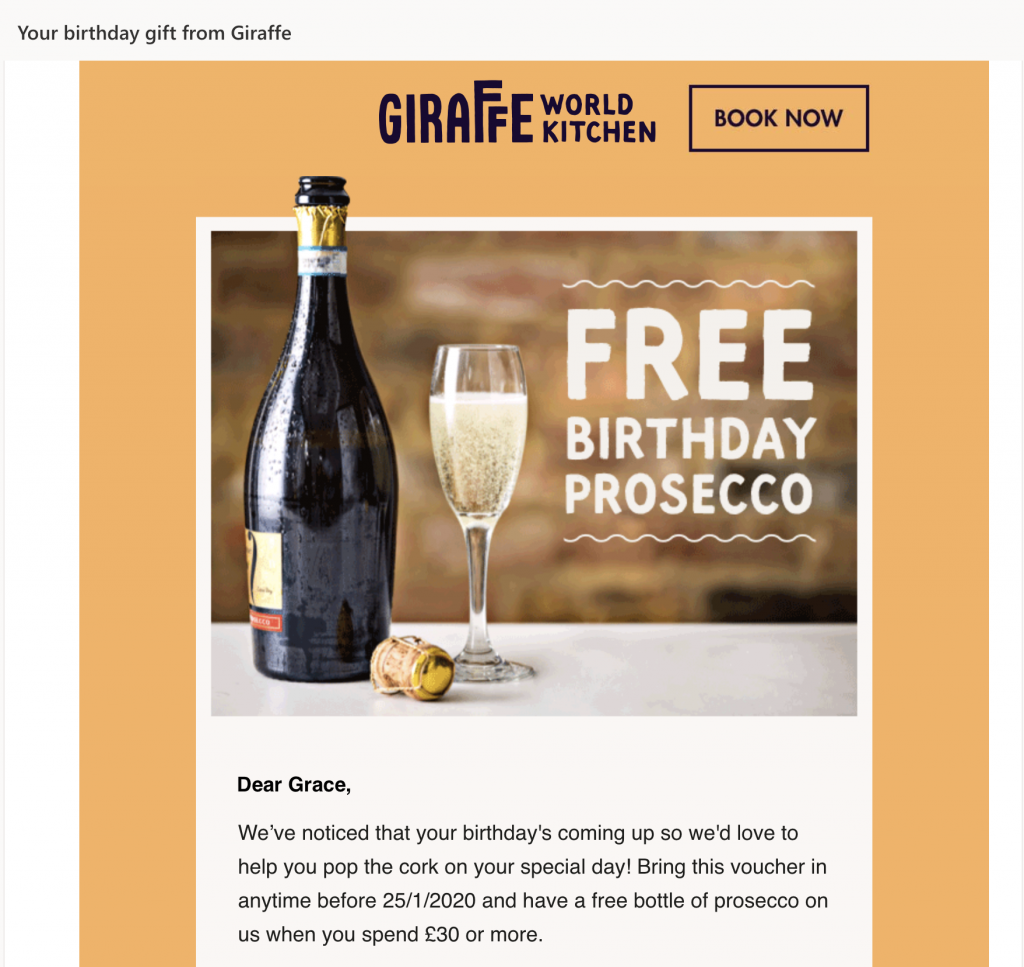 This email by Giraffe sets the party theme straight away. The promotion couldn't be made any clearer in the design, and overall, it's a smart way to get customers into the restaurant to celebrate their birthday.
This email by Giraffe sets the party theme straight away. The promotion couldn't be made any clearer in the design, and overall, it's a smart way to get customers into the restaurant to celebrate their birthday.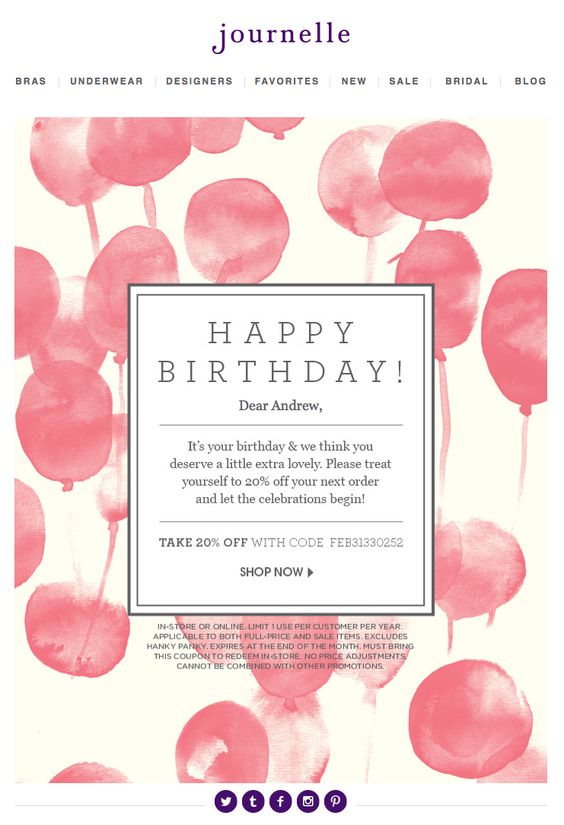 Journelle uses a simple, yet stylish design to wish their customers a happy birthday. The email layout itself looks like a birthday card, while the use of personalisation also helps give it that extra special touch.
Journelle uses a simple, yet stylish design to wish their customers a happy birthday. The email layout itself looks like a birthday card, while the use of personalisation also helps give it that extra special touch.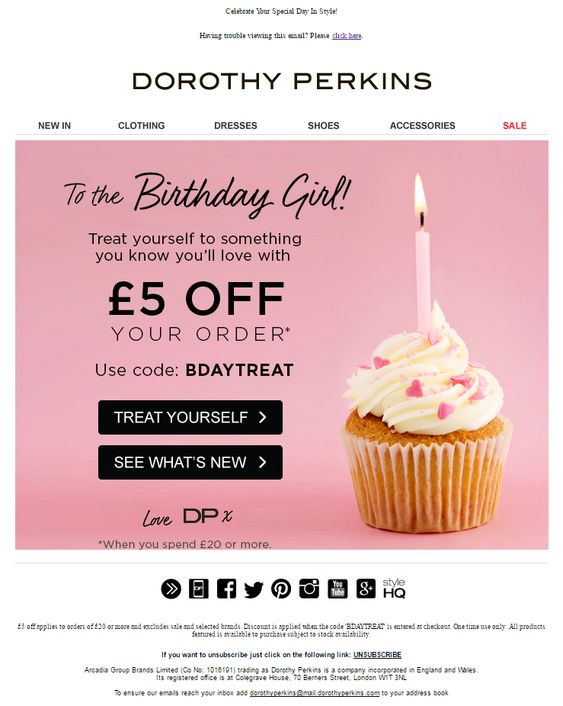 Not only does the cupcake in this design by Dorothy Perkins look super tasty, it's also a great eye-catcher. Thanks to bold call-to-action buttons, a clear discount, and the use of a handwriting style font, this design is a gift that doesn't disappoint.
Not only does the cupcake in this design by Dorothy Perkins look super tasty, it's also a great eye-catcher. Thanks to bold call-to-action buttons, a clear discount, and the use of a handwriting style font, this design is a gift that doesn't disappoint.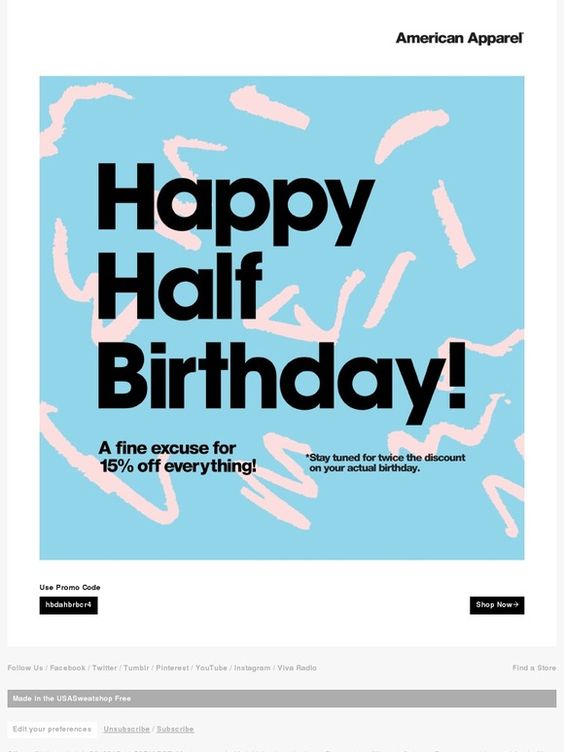 This abstract, confetti-style design by American Apparel is a bold and unique take on the automated birthday email. Choosing to celebrate the customer's half birthday is a clever technique which many companies wouldn't think of.
This abstract, confetti-style design by American Apparel is a bold and unique take on the automated birthday email. Choosing to celebrate the customer's half birthday is a clever technique which many companies wouldn't think of.
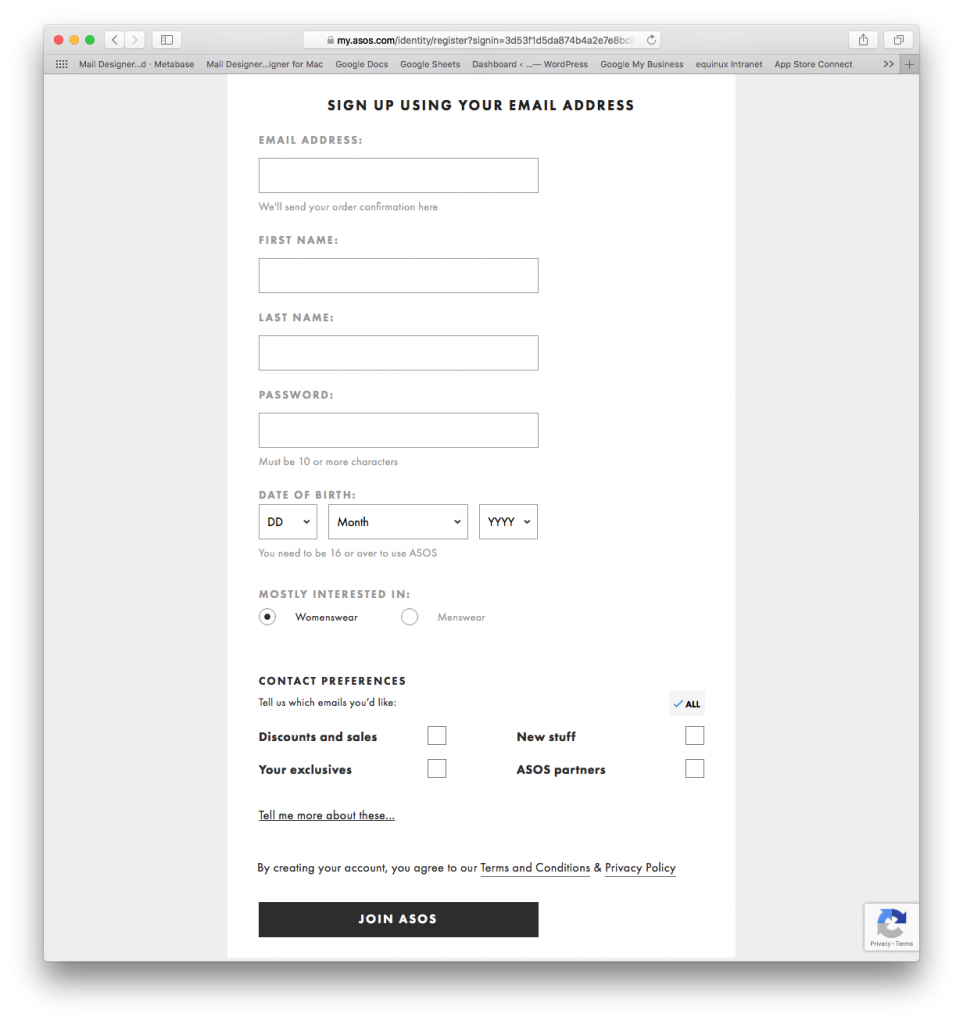
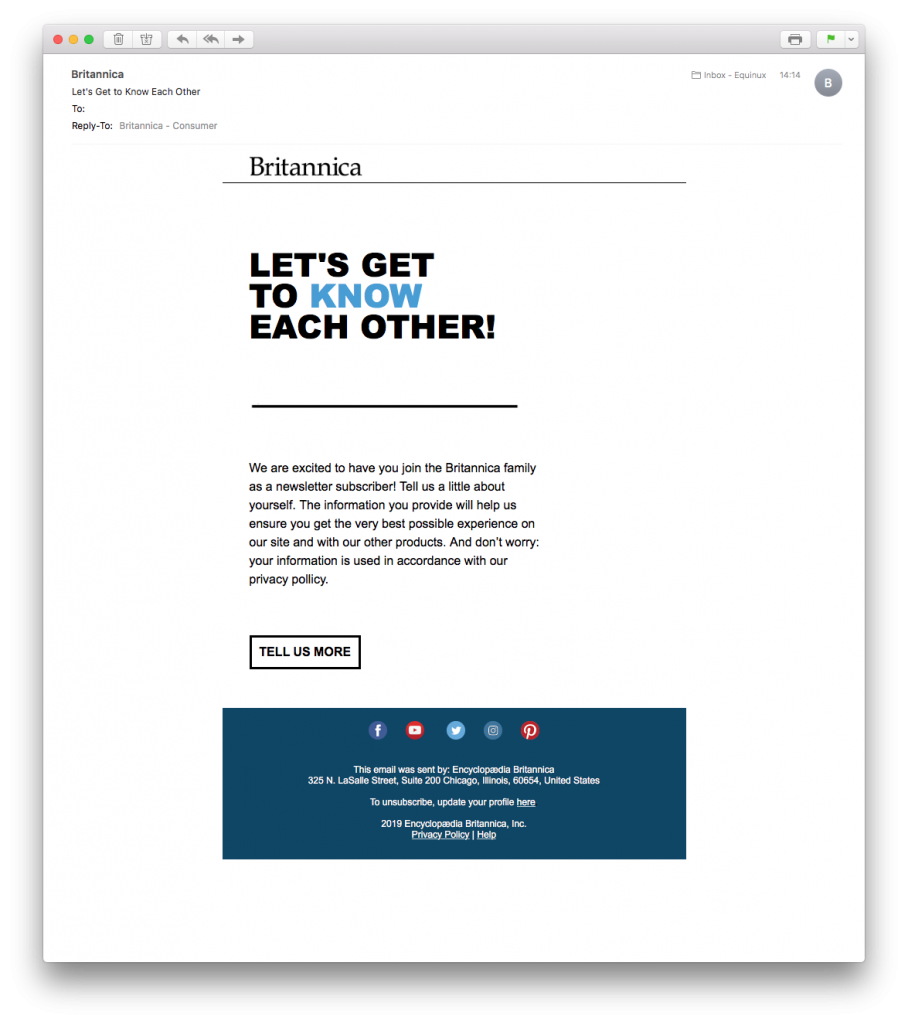
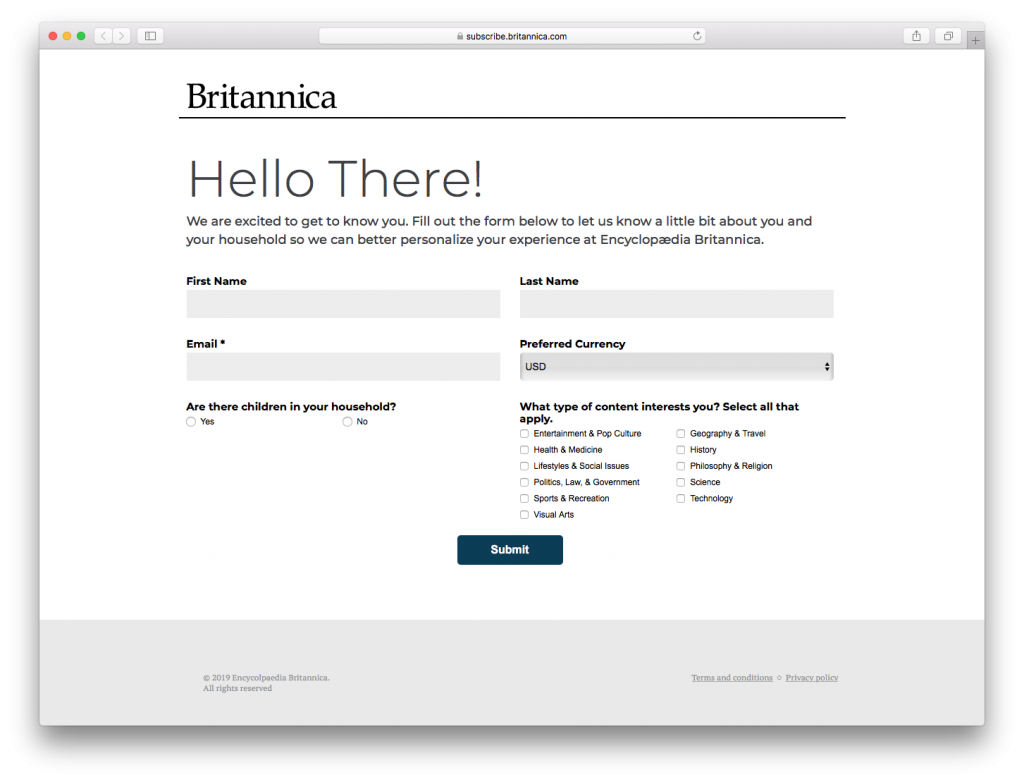
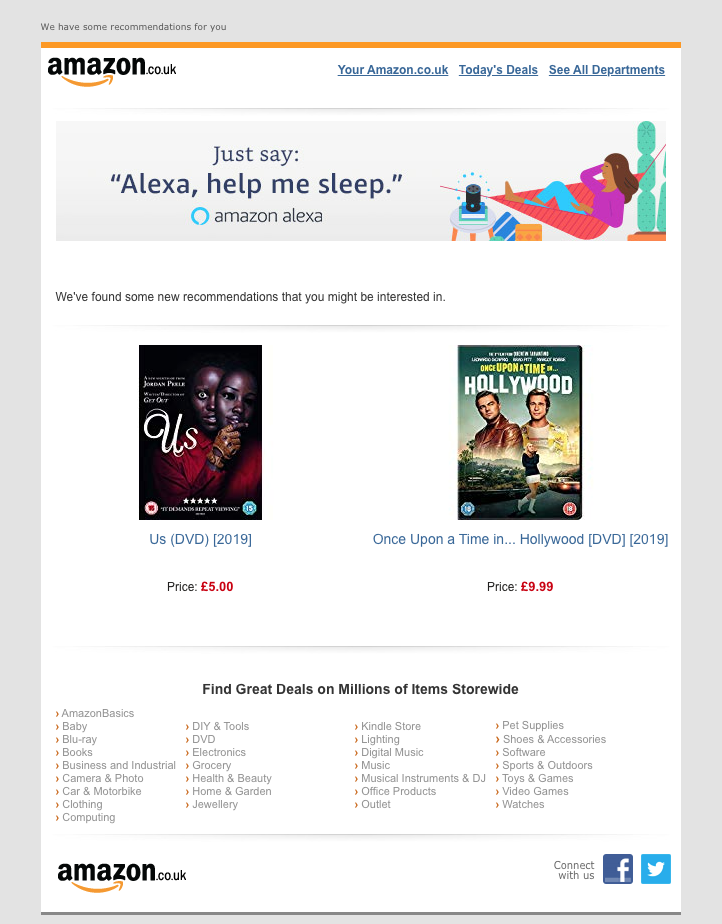
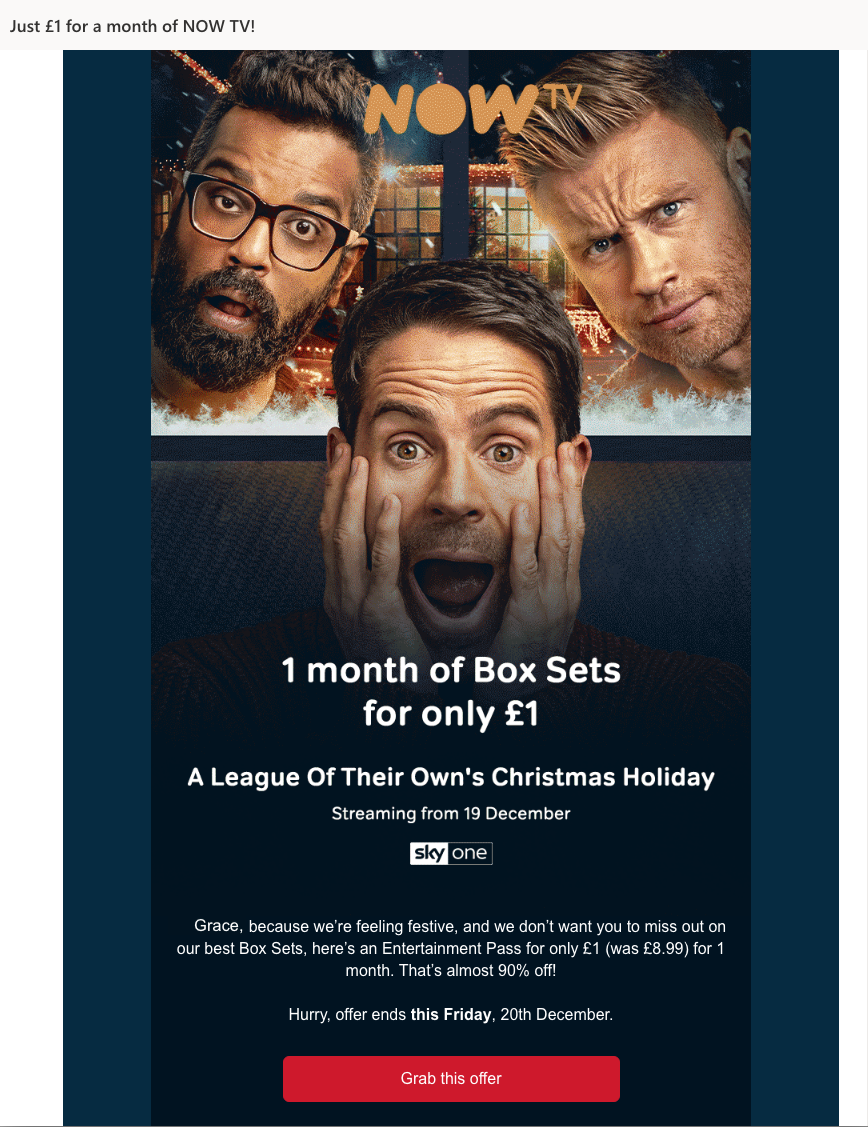
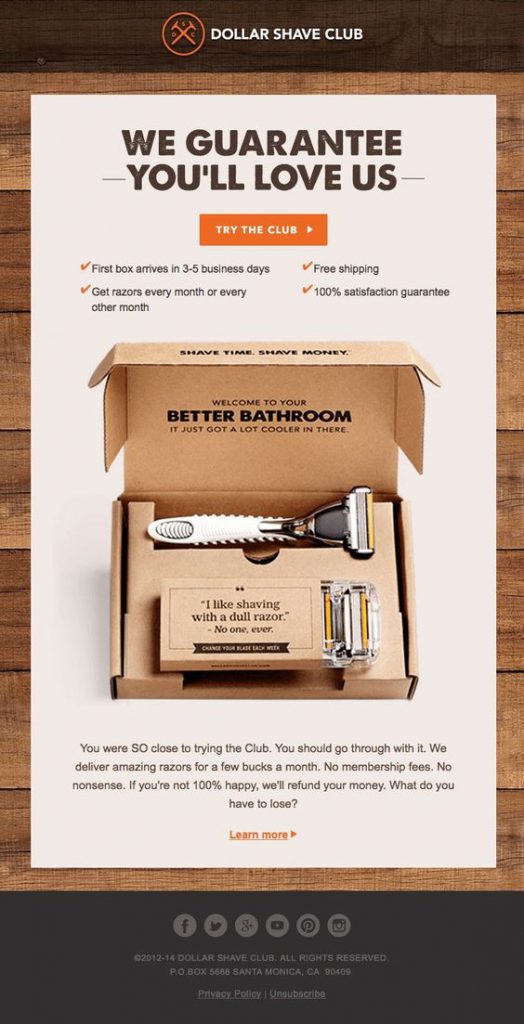
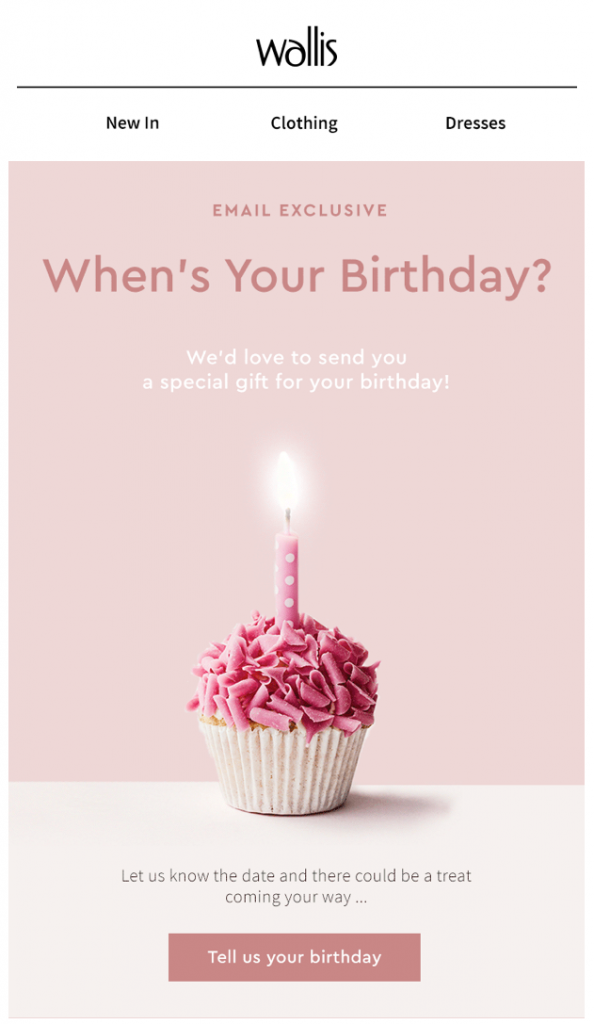
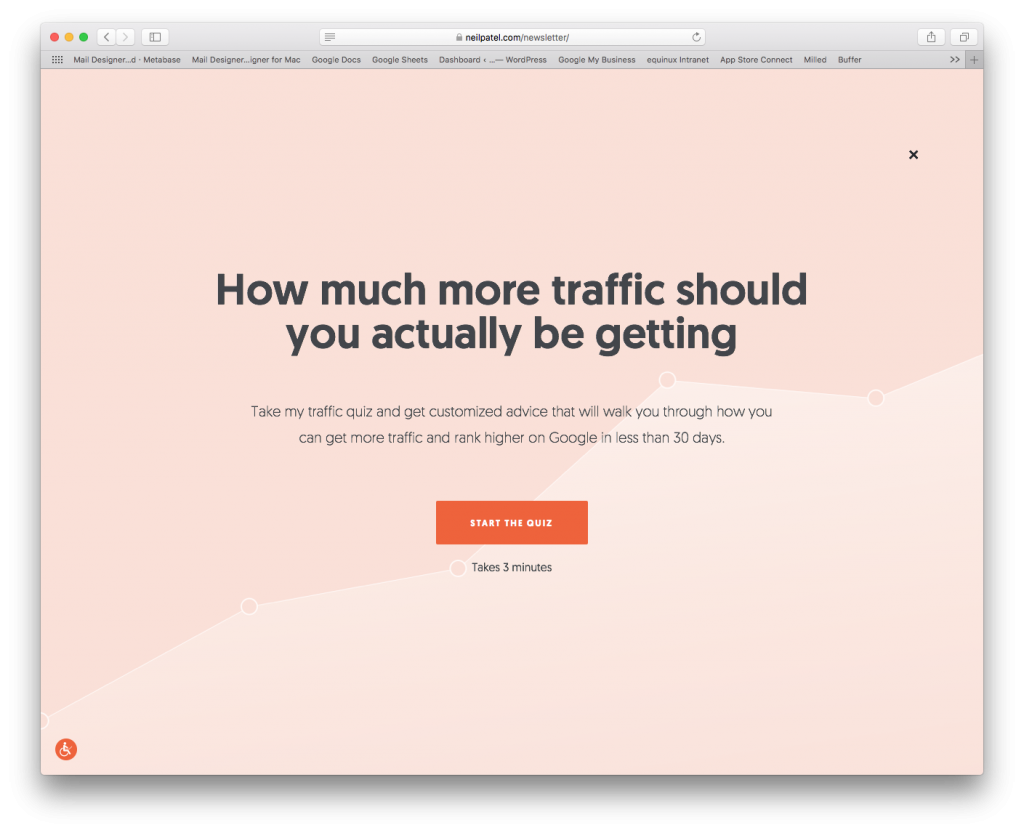
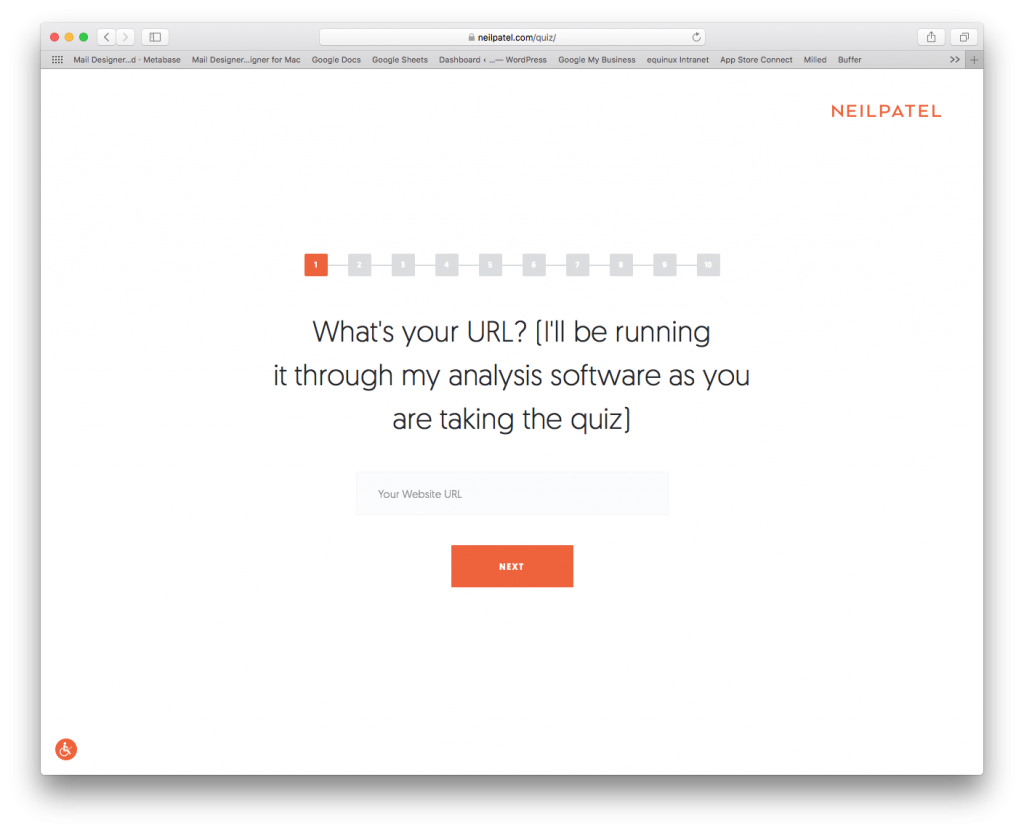



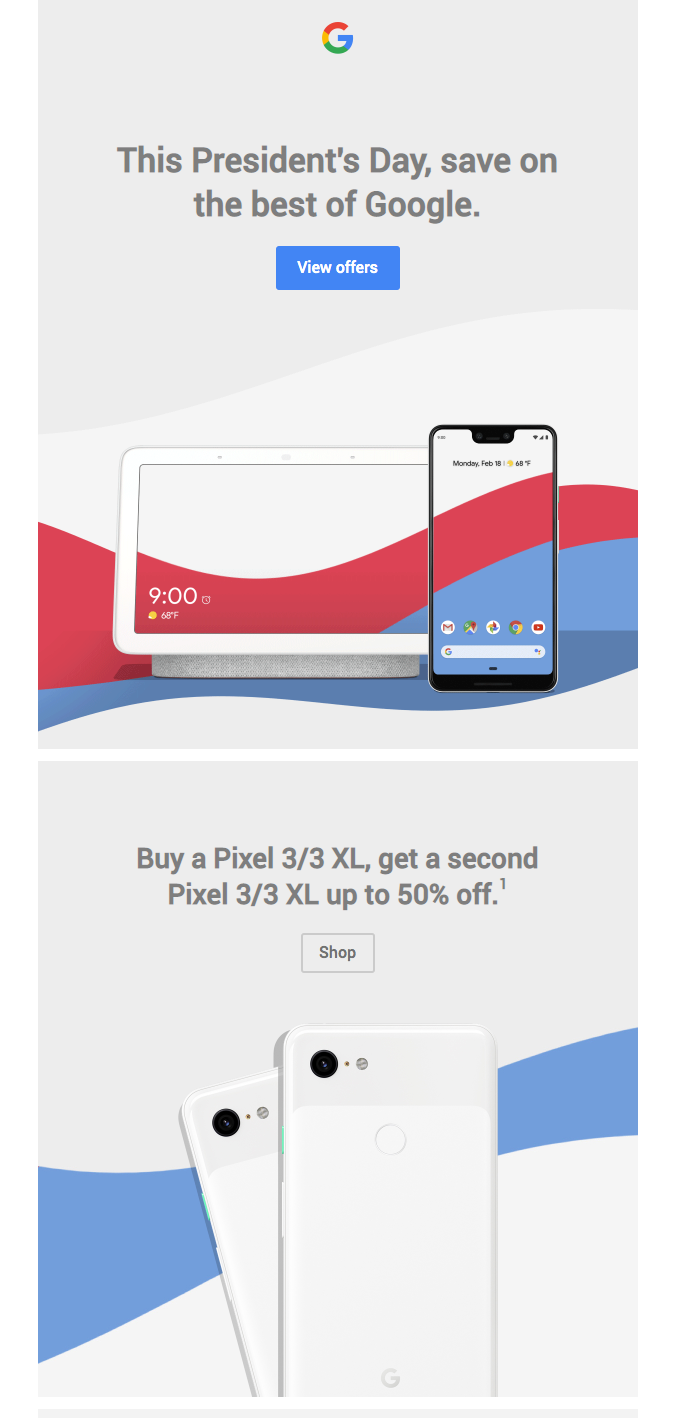
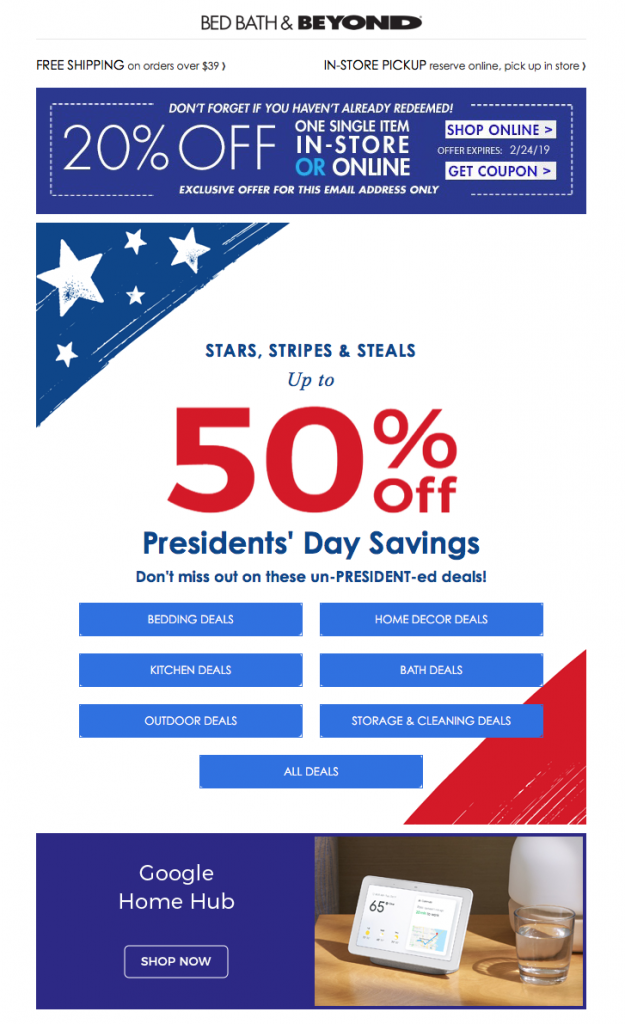
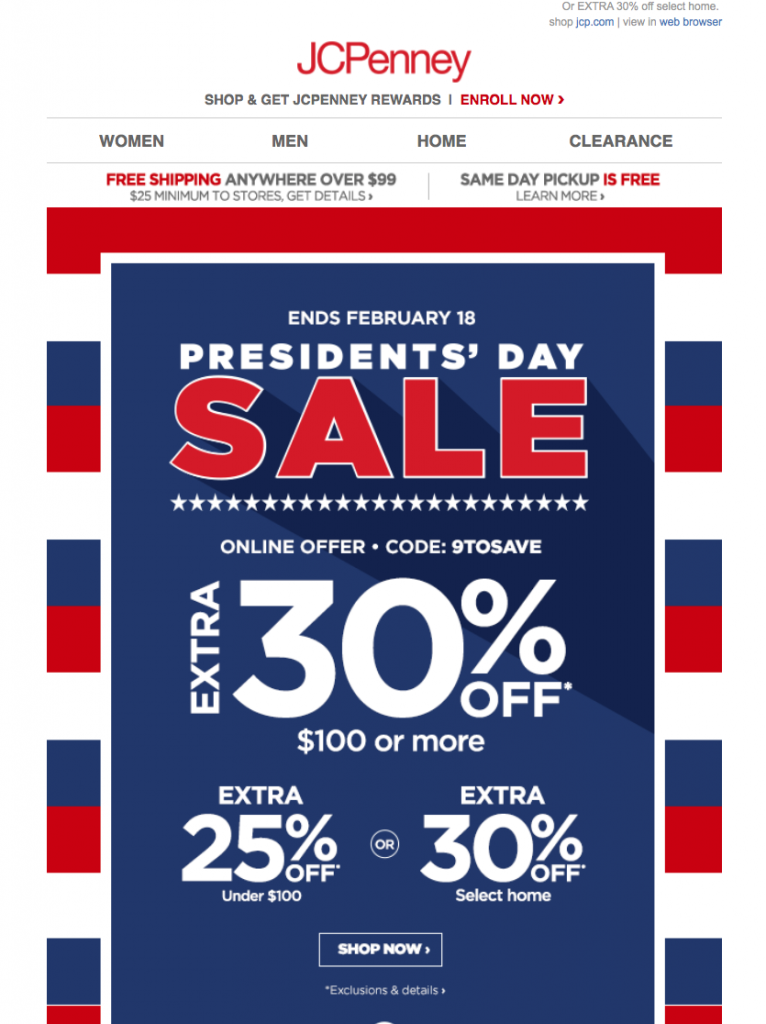
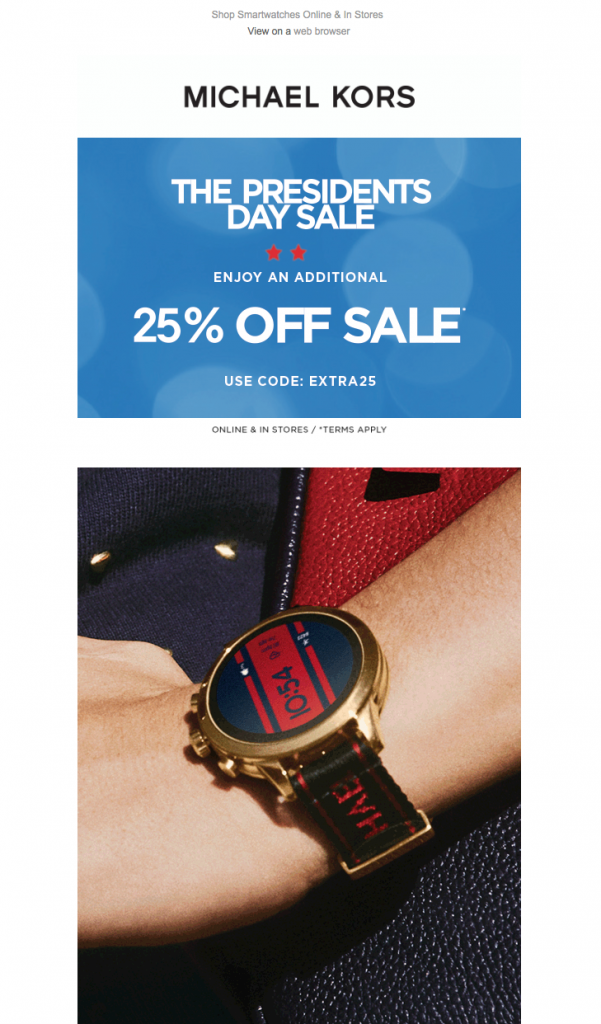
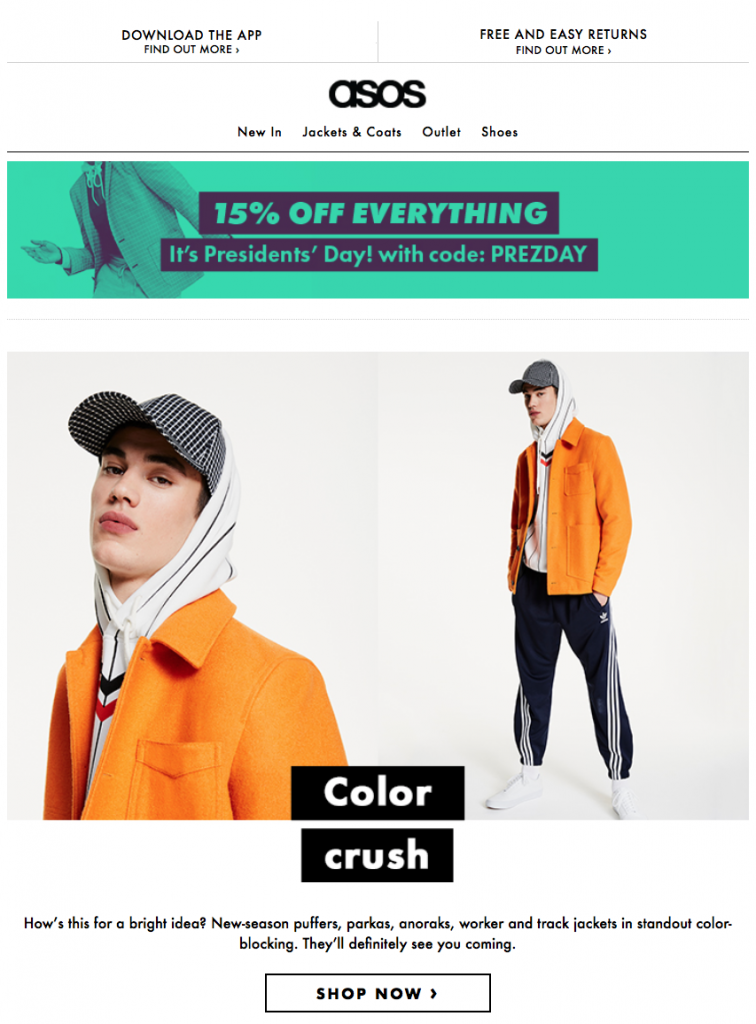
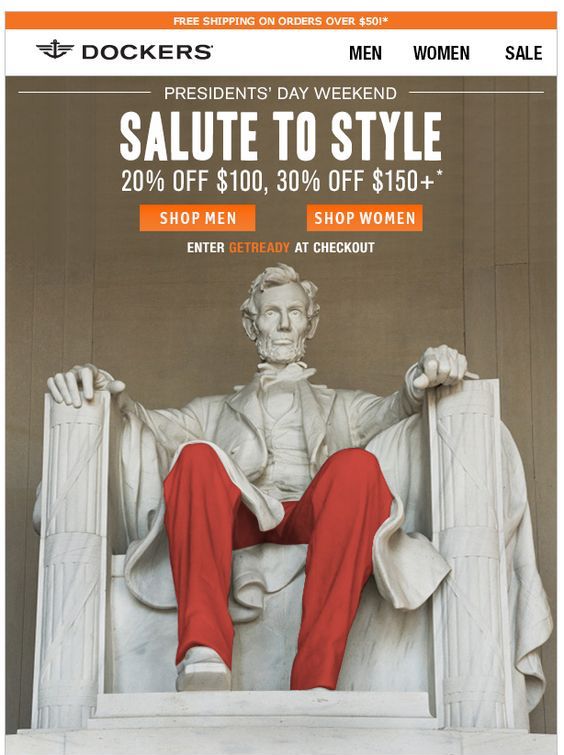
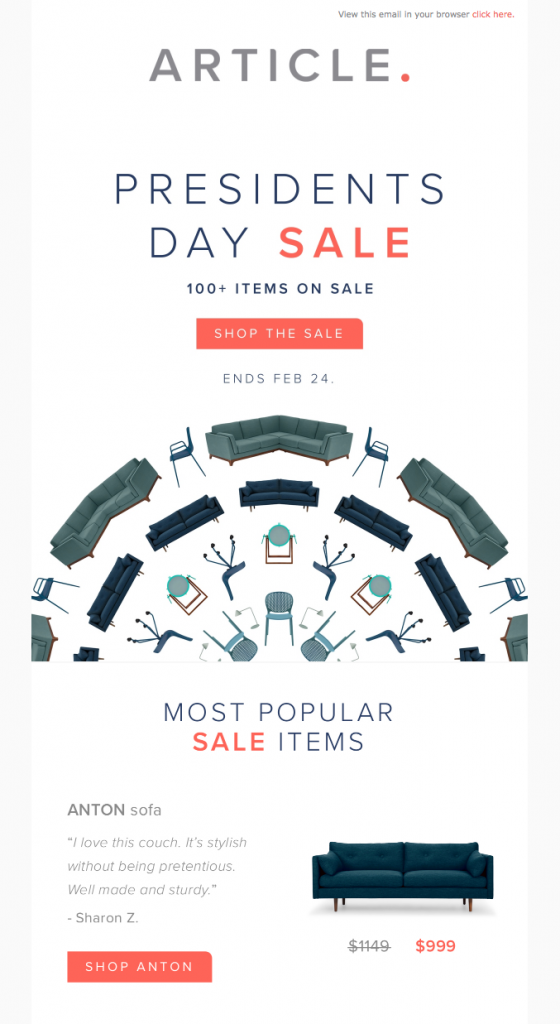 This Presidents' Day email design by Article also shows you don't have to go wild with the stars and stripes to get involved in the action. Big, easy to read headlines paired with bold CTAs and a clear shopping layout make up the perfect recipe for any sale or promotion.
This Presidents' Day email design by Article also shows you don't have to go wild with the stars and stripes to get involved in the action. Big, easy to read headlines paired with bold CTAs and a clear shopping layout make up the perfect recipe for any sale or promotion.